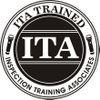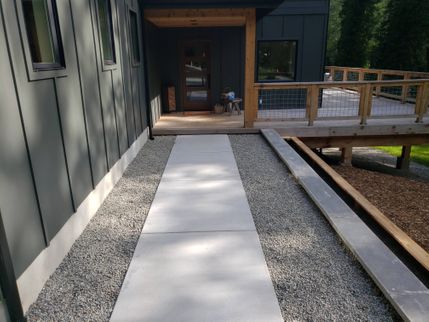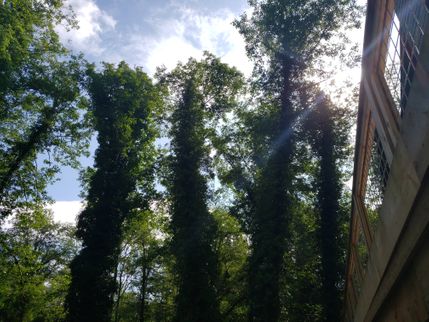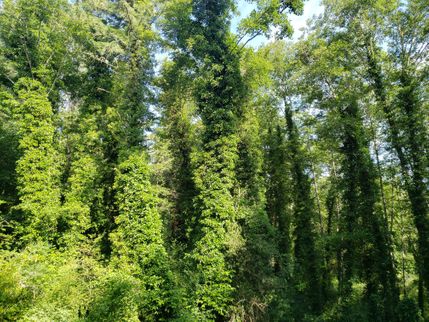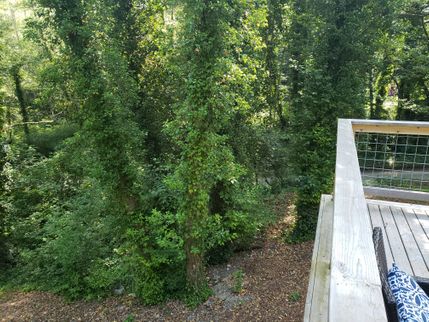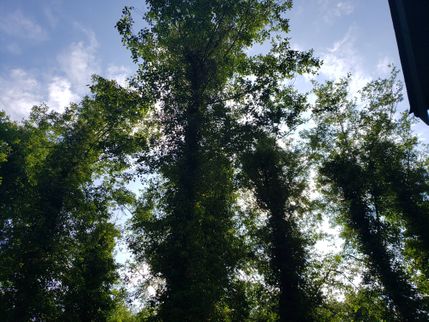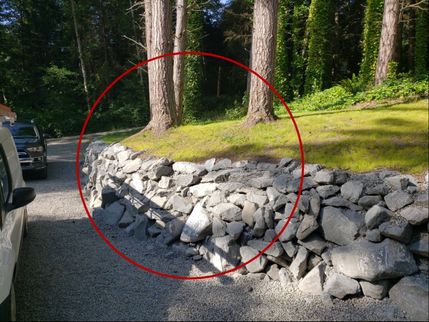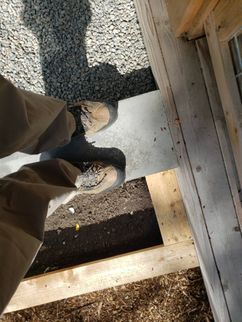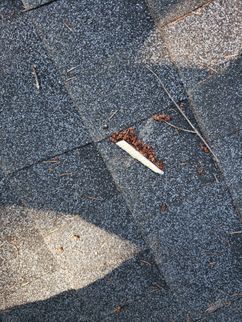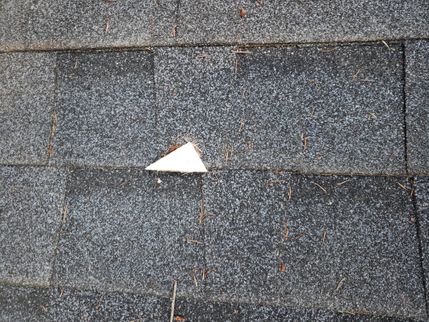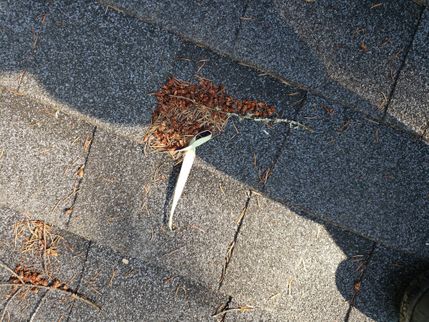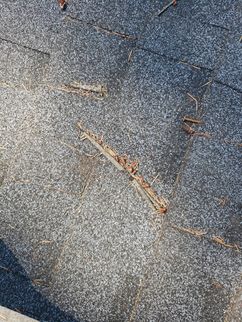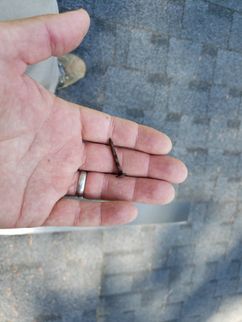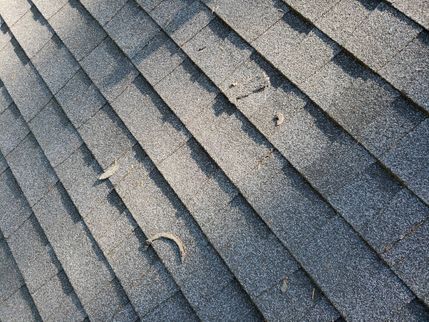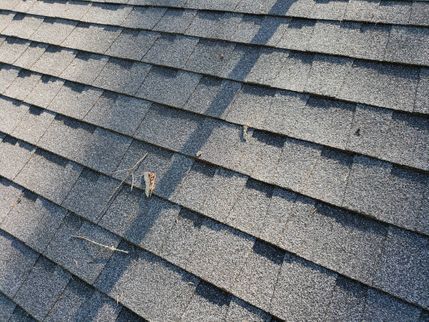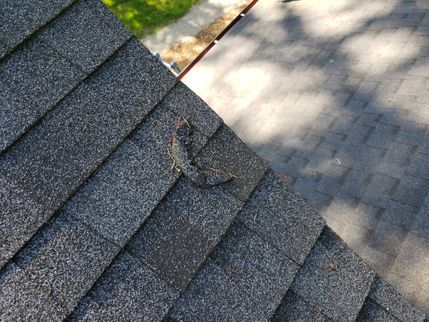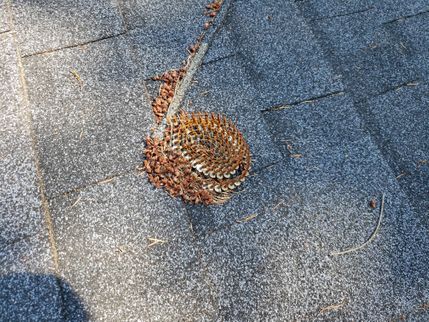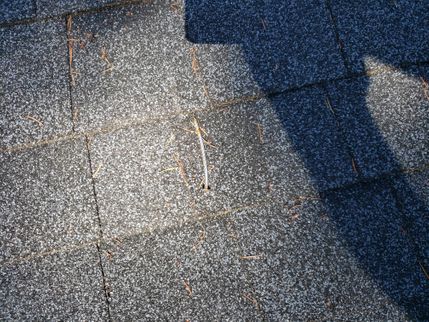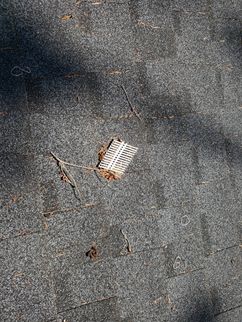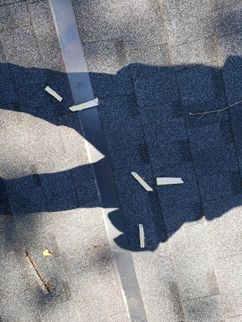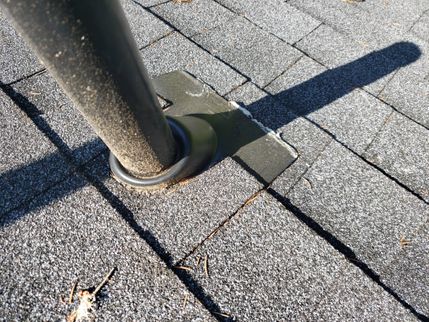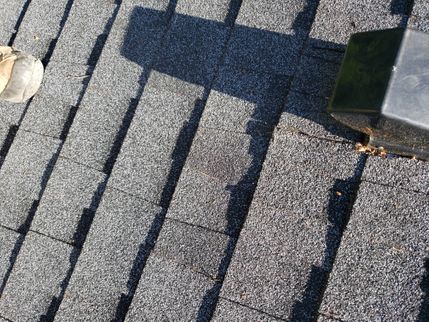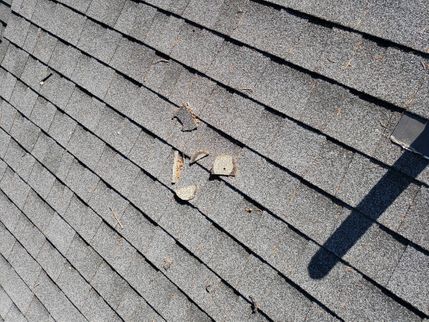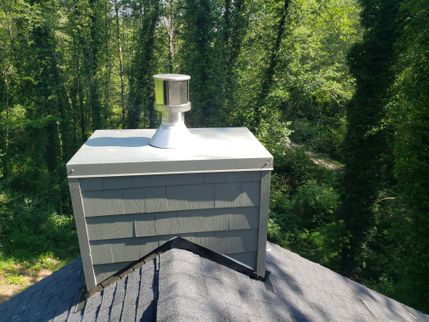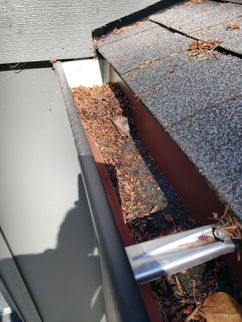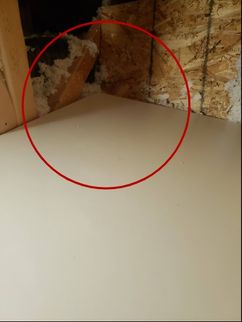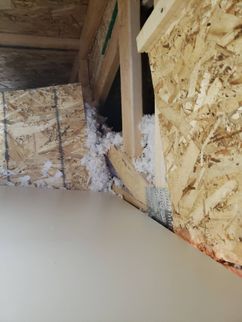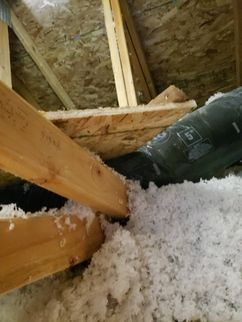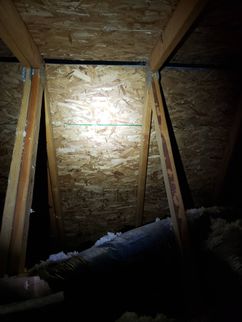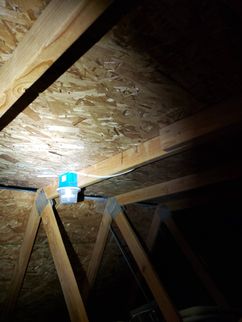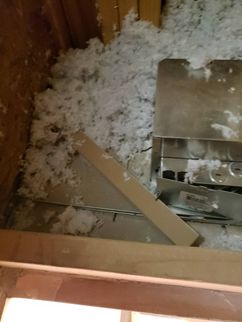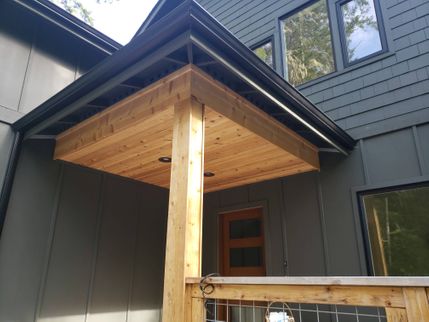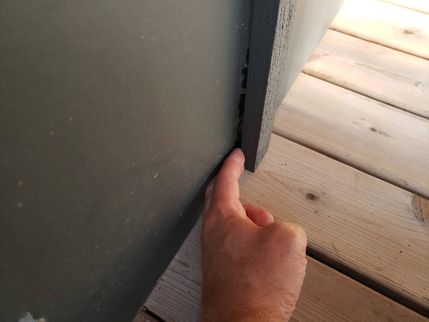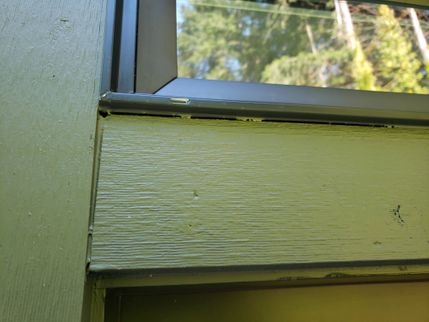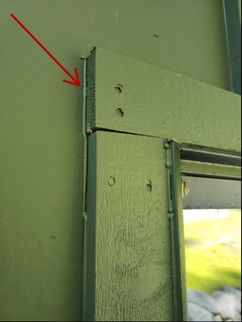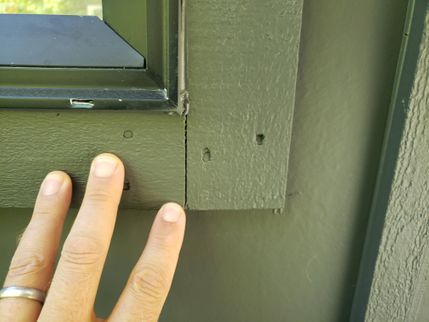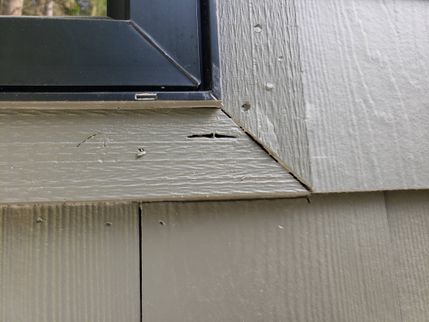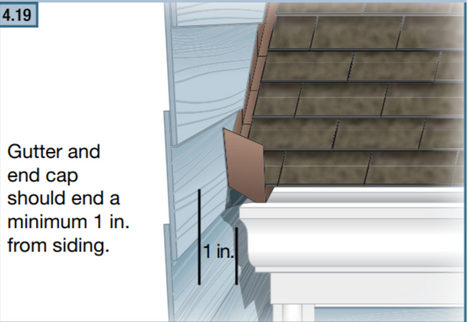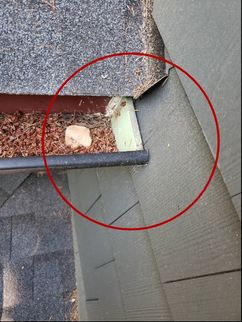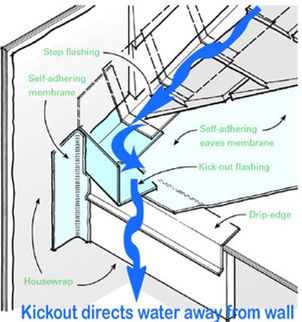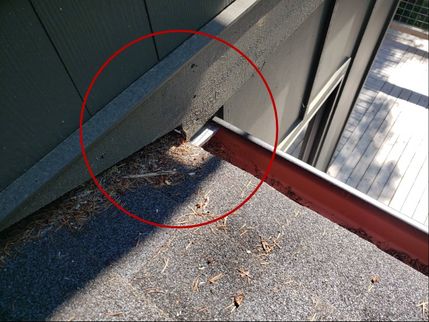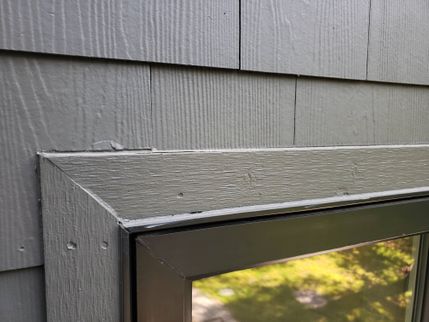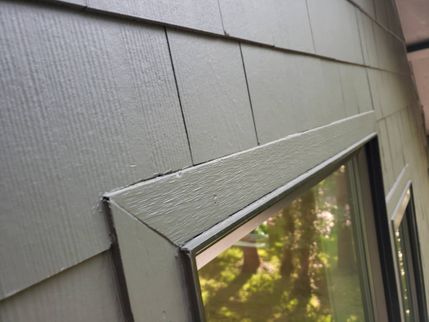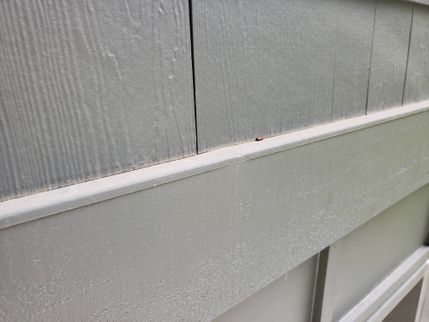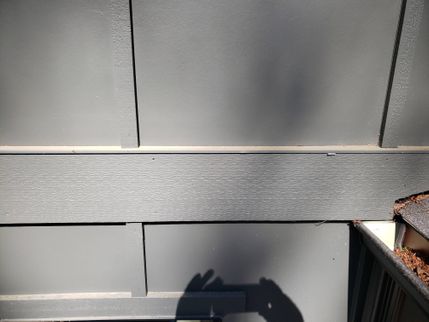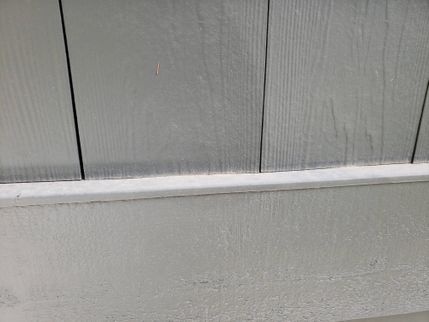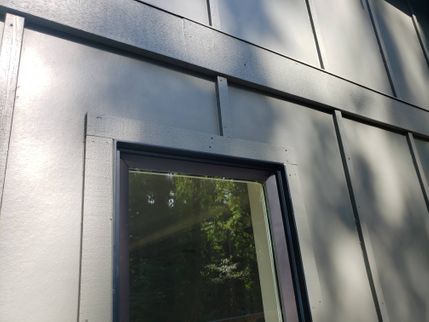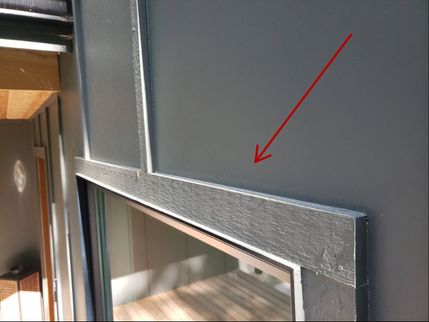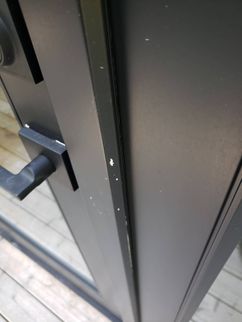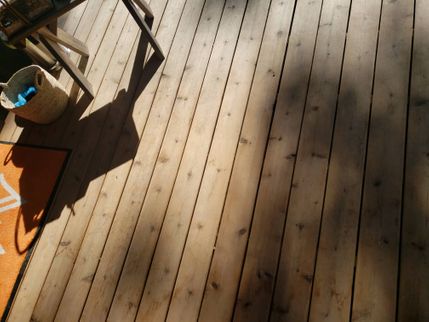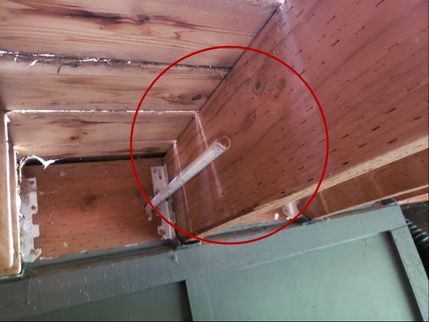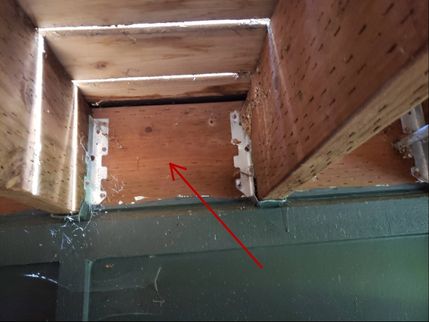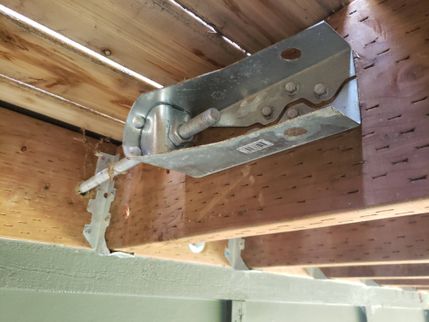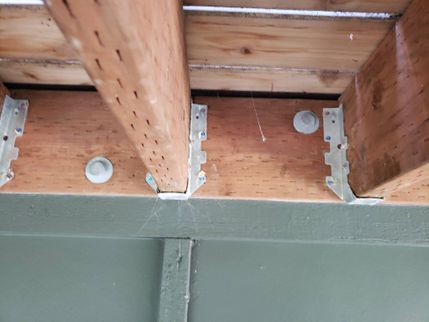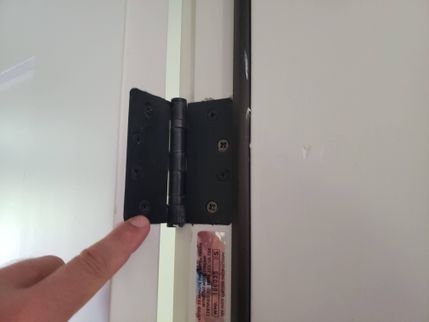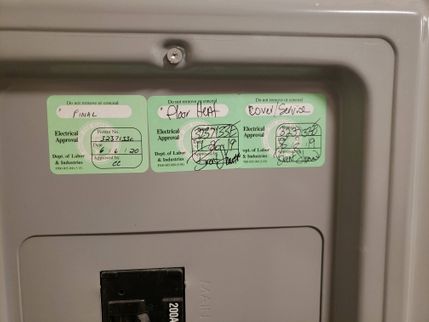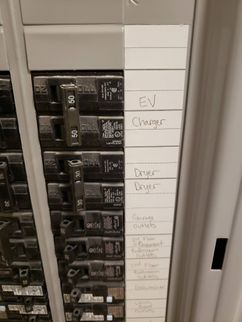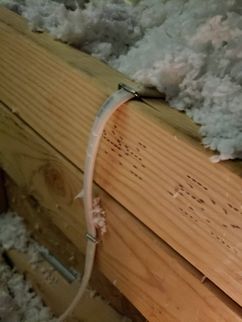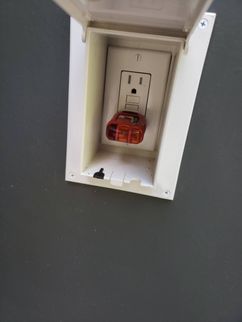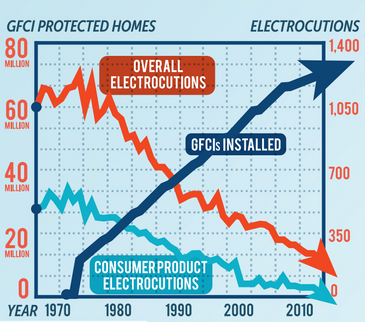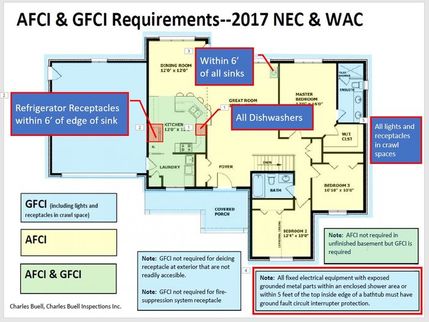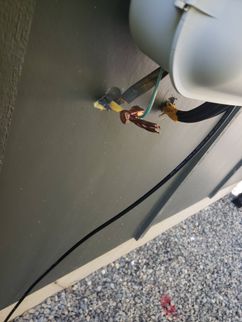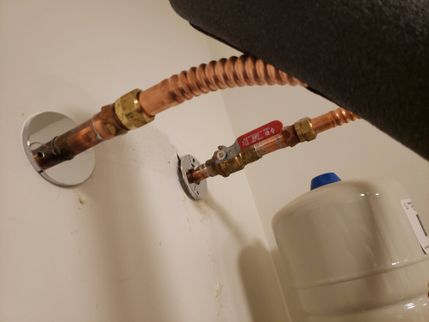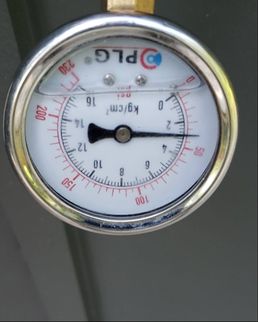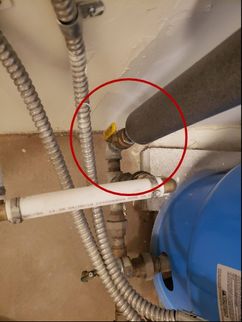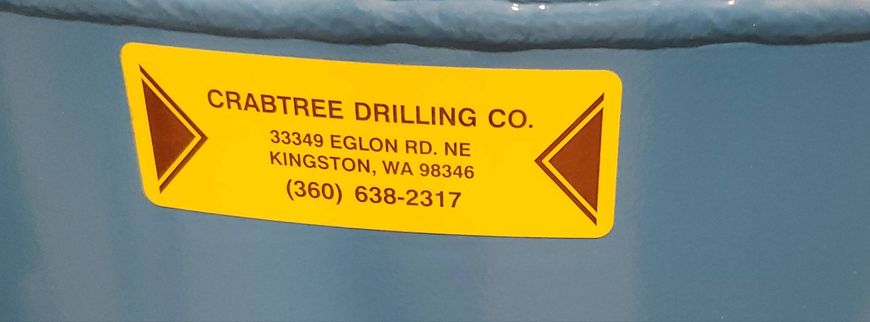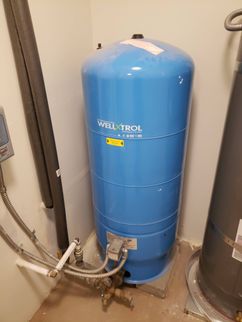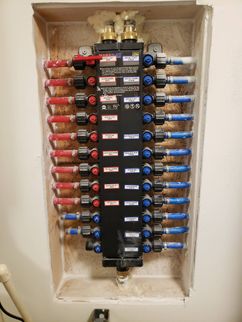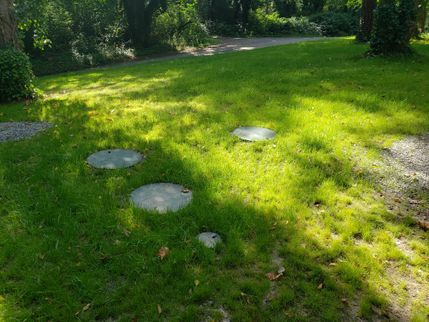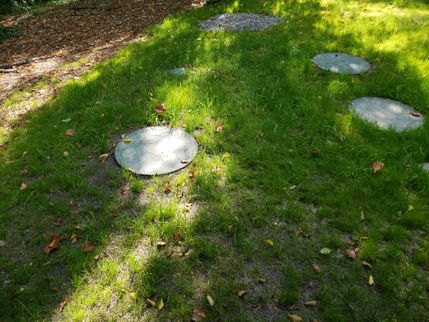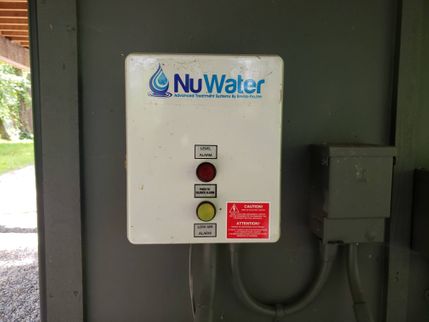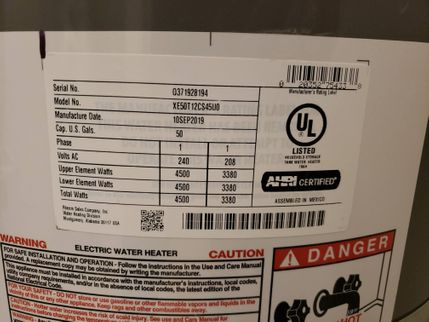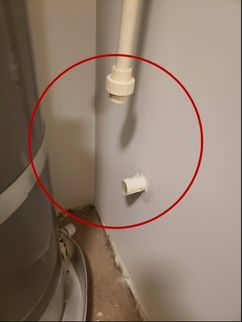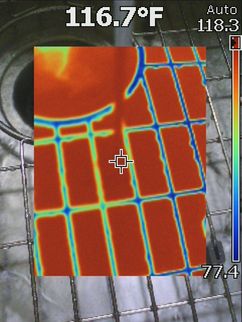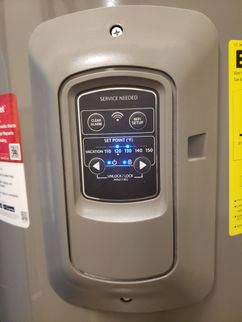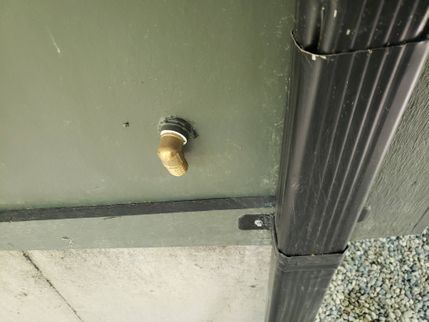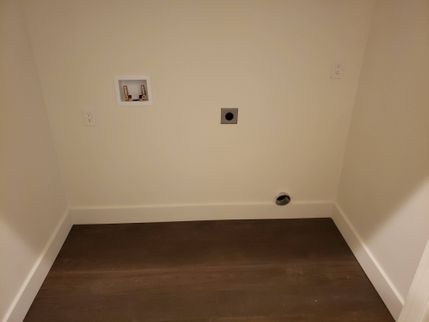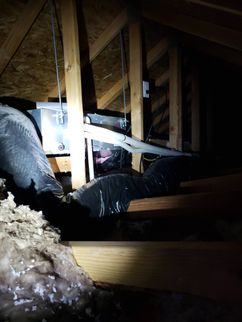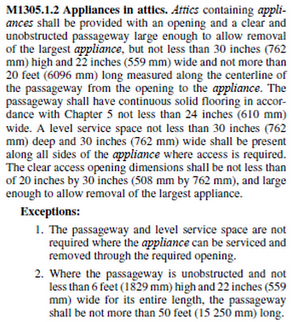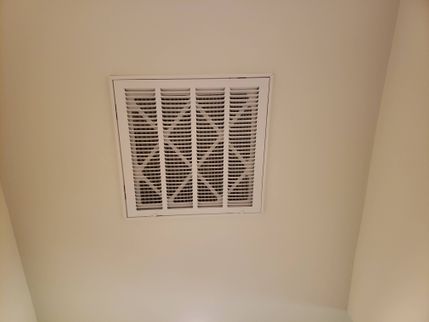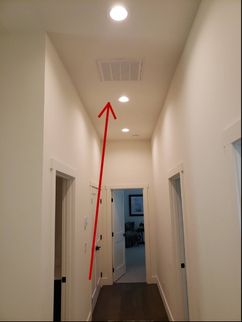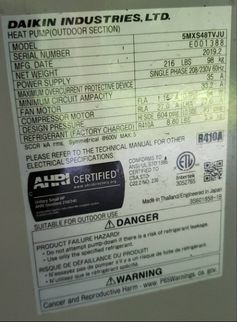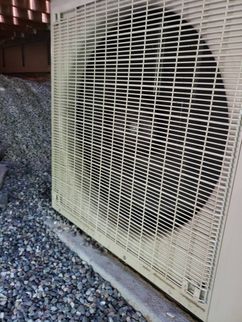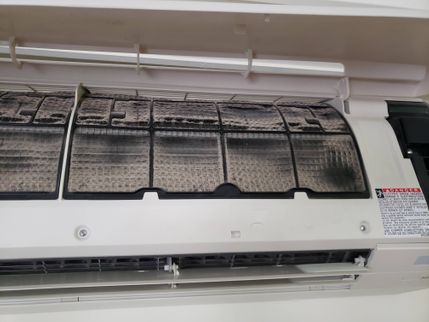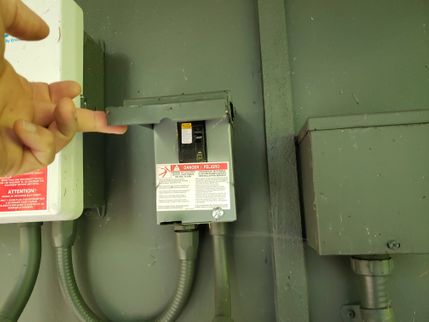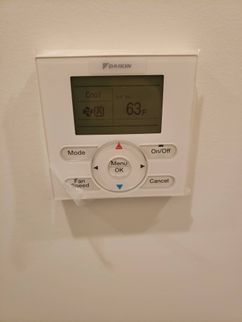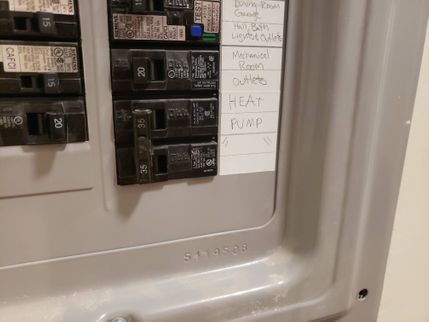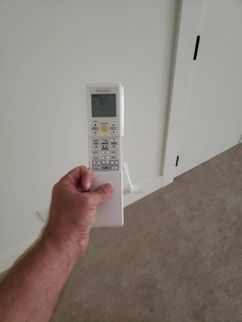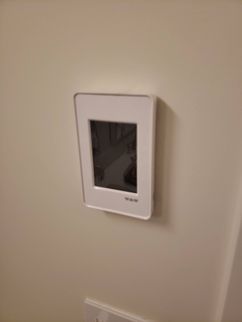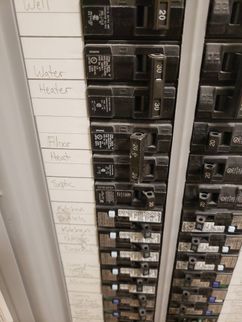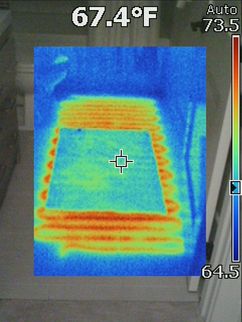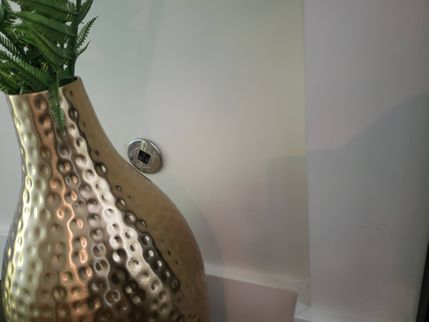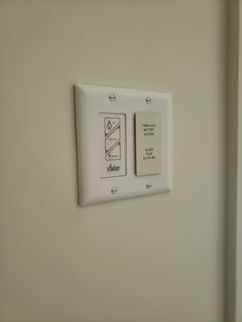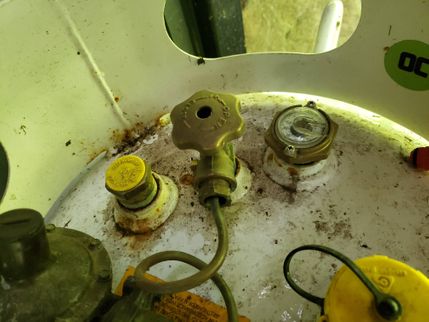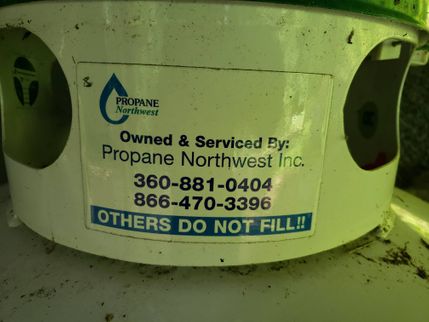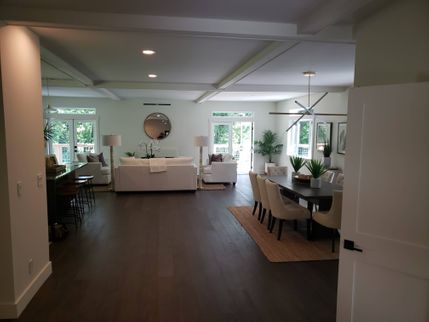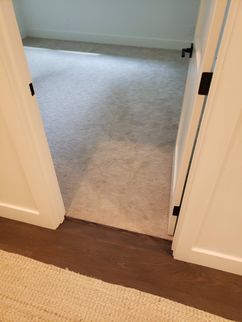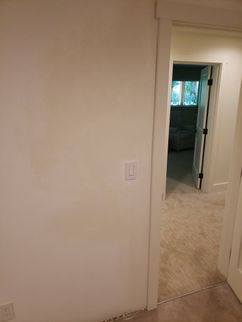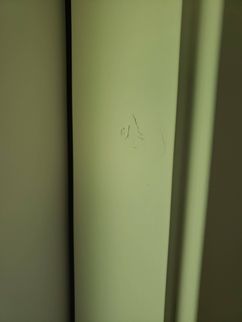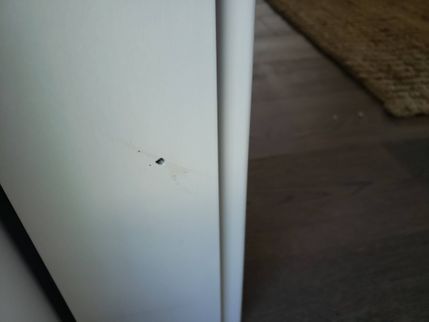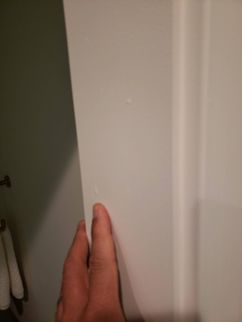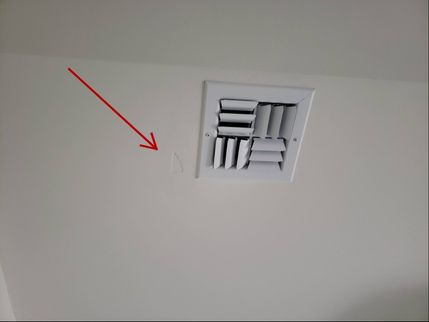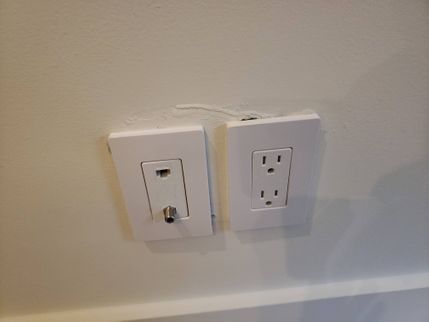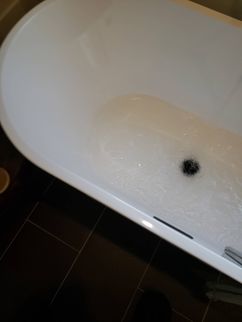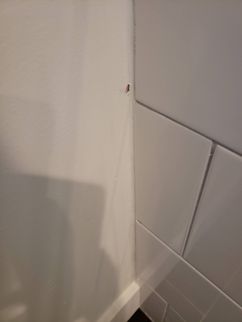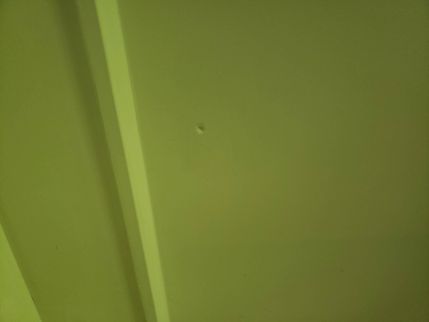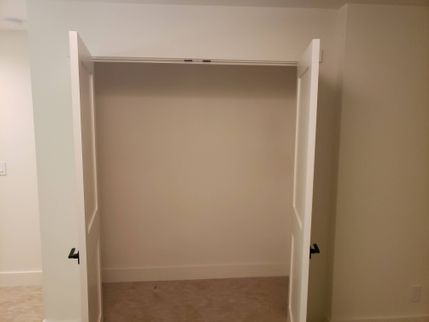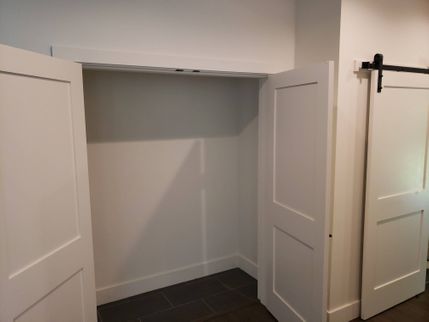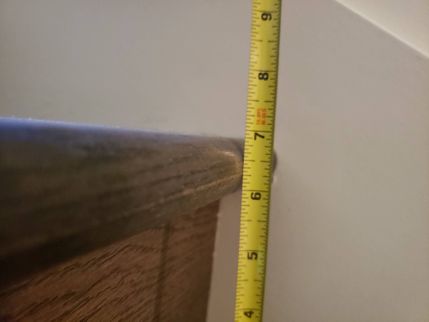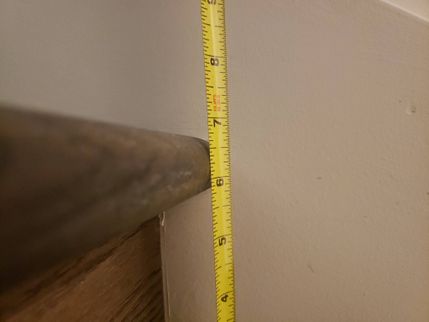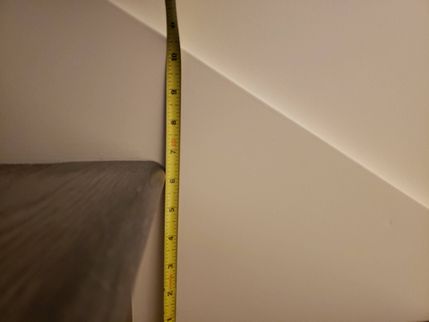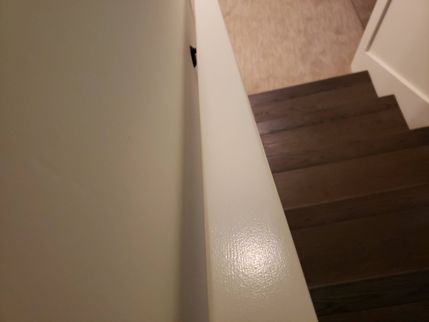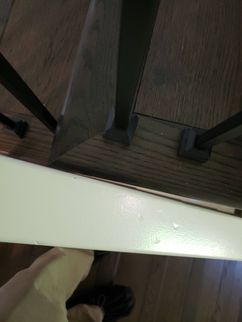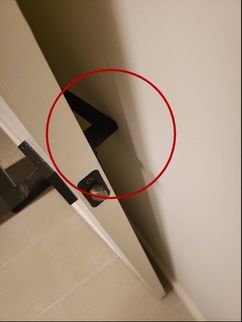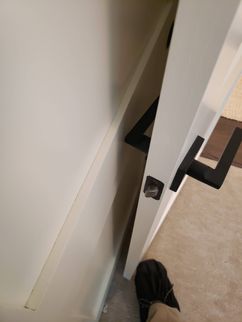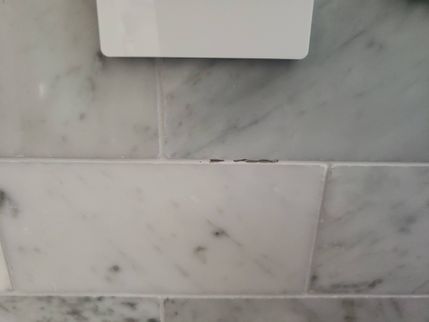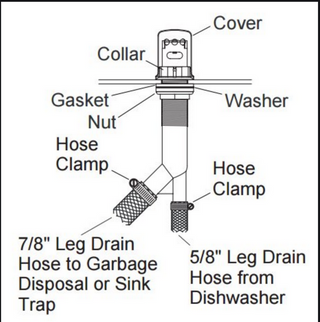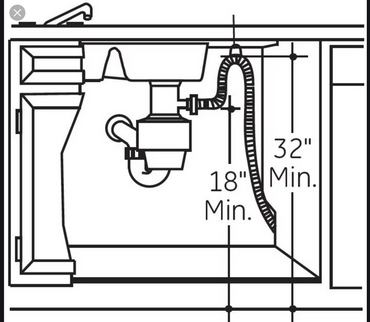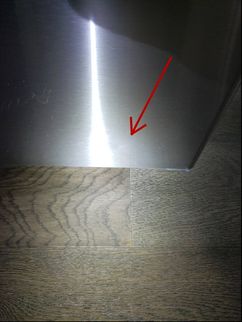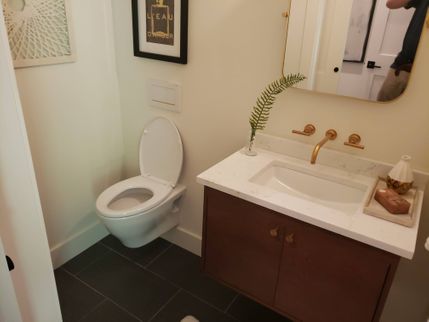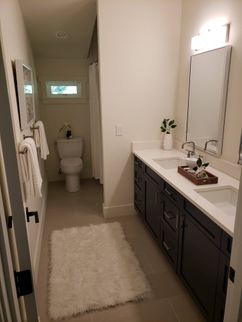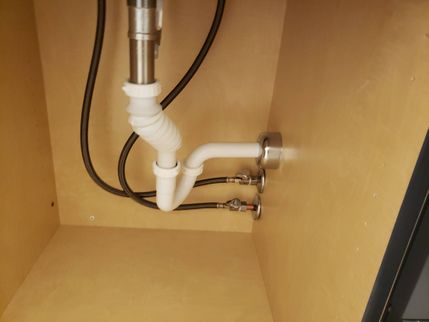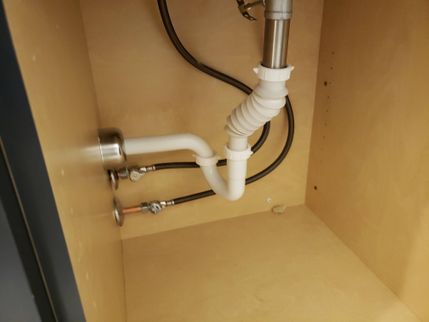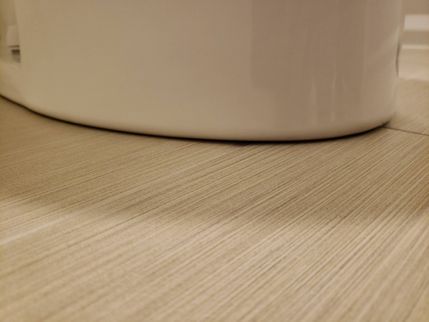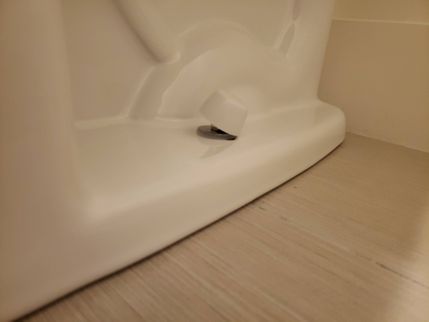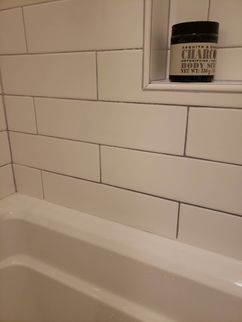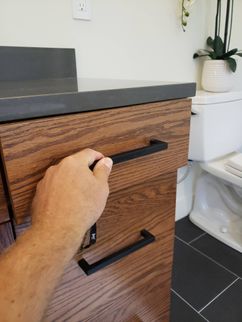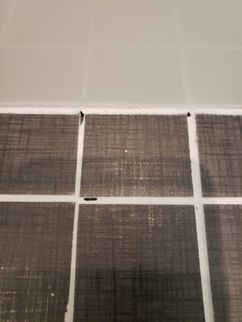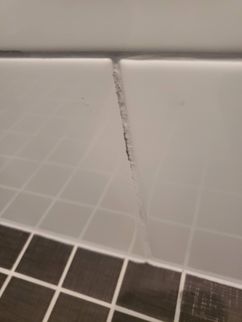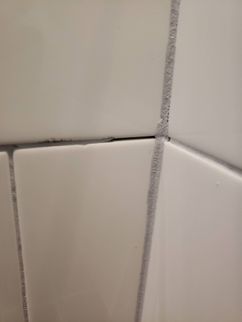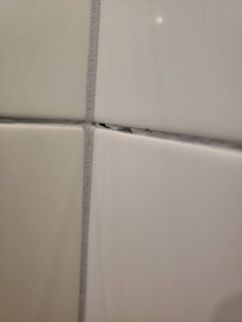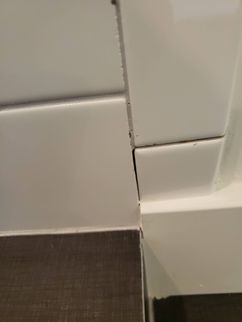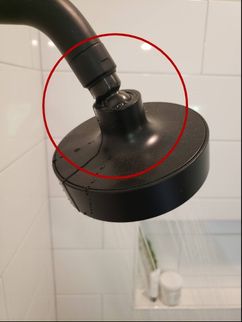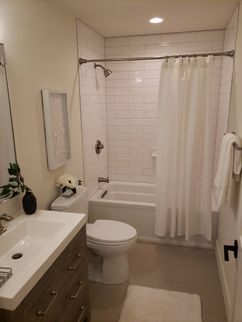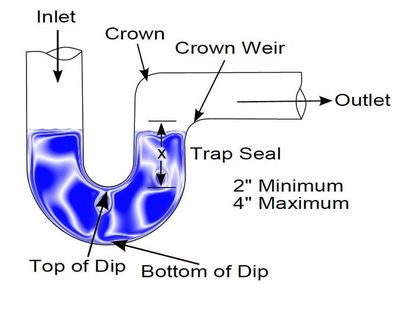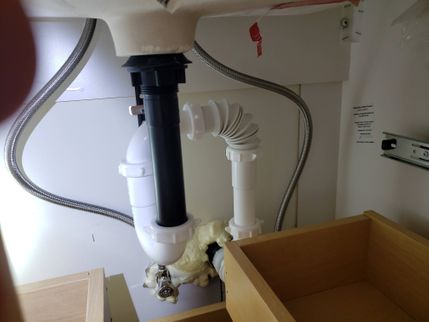The Scope and Purpose of a Home Inspection
Purchasing property involves risk
The purpose of a home inspection is to help reduce the risk associated with the purchase of a structure by providing a professional opinion about the overall condition of the structure. A home inspection is a limited visual inspection and it cannot eliminate this risk. Some homes present more risks than others. We cannot control this, but we try to help educate you about what we don’t know during the inspection process. This is more difficult to convey in a report and one of many reasons why we recommend that you attend the inspection.
A home inspection is not an insurance policy
This report does not substitute for or serve as a warranty or guarantee of any kind. Home warranties can be purchased separately from insuring firms that provide this service.
A home inspection is visual and not destructive
The descriptions and observations in this report are based on a visual inspection of the structure. We inspect the aspects of the structure that can be viewed without dismantling, damaging or disfiguring the structure and without moving furniture and interior furnishings. Areas that are concealed, hidden or inaccessible to view are not covered by this inspection. Some systems cannot be tested during this inspection as testing risks damaging the building. For example, overflow drains on bathtubs are generally not tested because if they were found to be leaking they could damage the finishes below. Our procedures involve non-invasive investigation and non-destructive testing which will limit the scope of the inspection.
This is not an inspection for code compliance
This inspection and report are not intended for city / local code compliance. During the construction process structures are inspected for code compliance by municipal inspectors. Framing is open at this time and conditions can be fully viewed. Framing is not open during inspections of finished homes, and this limits the inspection. All houses fall out of code compliance shortly after they are built, as the codes continually change. National codes are augmented at least every three years for all of the varying disciplines. Municipalities can choose to adopt and phase in sections of the codes on their own timetables. There are generally no requirements to bring older homes into compliance unless substantial renovation is being done.
This is just our opinion
Construction techniques and standards vary. There is no one way to build a house or install a system in a house. The observations in this report are the opinions of the home inspector. Other inspectors and contractors are likely to have some differing opinions. You are welcome to seek opinions from other professionals.
The scope of this inspection
This inspection will include the following systems: exterior, roof, structure, drainage, foundation, attic, interior, plumbing, electrical and heating. The evaluation will be based on limited observations that are primarily visual and non-invasive. This inspection and report are not intended to be technically exhaustive.
Your expectations
The overall goal of a home inspection is to help ensure that your expectations are appropriate with the house you are proposing to buy. To this end we assist with discovery by showing and documenting observations during the home inspection. This should not be mistaken for a technically exhaustive inspection designed to uncover every defect with a building. Such inspections are available but they are generally cost-prohibitive to most homebuyers.
Your participation is requested
Your presence is requested during this inspection. A written report will not substitute for all the possible information that can be conveyed verbally by a shared visual observation of the conditions of the property.
How to Read This Report
Getting the Information to You
This report is designed to deliver important and technical information in a way that is easy for anyone to access and understand. If you are in a hurry, you can take a quick look at our "Summary Page” and quickly get critical information for important decision making. However, we strongly recommend that you take the time to read the full Report, which includes digital photographs, captions, diagrams, descriptions, videos and hot links to additional information.
The best way to get the layers of information that are presented in this report is to read your report online (the HTML version), which will allow you to expand your learning about your house. You will notice some words or series of words highlighted in blue and underlined – clicking on these will provide you with a link to additional information. The HTML version of this report also contains streaming videos. Short video clips often contain important information and critical context and sounds that can be difficult to capture in words and still pictures.
For the most reliable viewing experience, I recommend viewing the report on as large a screen as practical, as much detail can be lost on small devices like smart phones. For similar reasons, reports should only be printed in color to retain as much detail as possible and minimize misinterpretation of photographs.
This report can also be printed on paper or to a PDF document.
Chapters and Sections
This report is divided into chapters that parcel the home into logical inspection components. Each chapter is broken into sections that relate to a specific system or component of the home. You can navigate between chapters with the click of a button on the left side margin.
Most sections will contain some descriptive information done in black font. Observation narrative, done in colored boxes, will be included if a system or component is found to be significantly deficient in some way or if we wish to provide helpful additional information about the system or the scope of our inspection. If a system or component of the home was deemed to be in satisfactory or serviceable condition, there may be no narrative observation comments in that section and it may simply say “tested,” or “inspected.”
Observation Labels
All narrative observations are colored, numbered and labeled to help you find, refer to, and understand the severity of the observation. Observation colors and labels used in this report are:
- Major Concern:Repair items that may cost significant money to correct now or in the near future, or items that require immediate attention to prevent additional damage or eliminate safety hazards.
- Repair:Repair and maintenance items noted during inspection. Please note that some repair items can be expensive to correct such as re-finishing hardwood floors, but are considered simply repair items due to their cosmetic nature.
- Recommended Maintenance:These are repair items that should be considered "routine home ownership items," such as servicing the furnace, cleaning the gutters or changing the air filters in the furnace.
- Improve or Upgrade:Observations that are not necessarily defects, but which could be improved for safety, efficiency, or reliability reasons. These are often items which reflect changes in building codes or standards.
- Monitor:Items that should be watched to see if correction may be needed in the future.
- Due Diligence:Observation such as a buried oil tank that may require further investigation to determine the severity and / or urgency of repair.
- Future Project:A repair that may be deferred for some time but should be on the radar for repair or replacement in the near future.
- Efficiency:Denotes observations that are needed to make the home more energy efficient as well as to bring the home up to modern insulation standards. This category typically includes windows and insulation. Other items, such as lighting and appliances, are not inspected for their energy status.
- Recommended Disclosure Items:These are observations for which we recommend that sellers disclose more information to buyers so that buyers can better understand recent servicing, repairs or maintenance or even construction history or building and site design.
- Inspection Notes and Limitations:Refers to aside information and /or any comments elaborating on descriptions of systems in the home or limitations to the home inspection.
- Description:Detailed description of various aspects of the property noted during the inspection.
Pest Inspection
All items with the bug logo () are part of a structural pest inspection. If your inspector included a structural pest inspection as a part of the scope of your home inspection, you can distinguish pest inspection items by this logo. You can also go to the pest inspection summary page to see a summary of the items that are part of a pest inspection.
Summary Page
The Summary Page is designed as a bulleted overview of all the observations noted during inspection. This helpful overview is not a substitution for reading the entire inspection report. The entire report must be read to get a complete understanding of this inspection report as the Summary Page does not include photographs or photo captions.
Moisture Meter Testing
Where moisture meter testing is indicated in this report a Protimiter Survey Master Dual Function was used.
Summary
Major Concerns
- EG-6 Exterior/Garage:
Inconsistent flashings were noted for the horizontal trim above windows and doors and horizontal junctures - see window trim at exposed south-facing shingle siding. This can lead to concealed water entry and damage to those horizontal junctures that have not been flashed, especially where exposed to the weather. A metal flashing shall be provided for areas like this that could allow water entry. Hire a licensed general contractor to further evaluate and repair to ensure reliable performance. This needs to be installed at exposed south-facing windows with the shingle style siding.
- P-3 Plumbing:
Overall, numerous repairs are needed to the plumbing system in the home - please see the plumbing, bathroom and kitchen chapters in this report for specific details. Given the number of repairs noted during inspection and the number of red flags, additional repairs may be needed. I recommend additional inspection of the plumbing system by a licensed plumbing contractor to further evaluate and repair the entire plumbing system to ensure safe and reliable performance.
- HCFV-1 Heating, Cooling, Fireplaces and Ventilation:
The heating system in the attic has inadequate access for servicing. A solid floor, 24 inches wide should run from the access hatch to the furnace. Have this further evaluated and repaired as recommended by a qualified general contractor so these can be safely serviced without damaging the insulation. Also, be sure a proper light is provided for servicing this equipment and that the opening is large enough for removing the equipment if needed.
Repairs
- G-2 Grounds:
Eliminate wood /soil contact to reduce the chances for rot and pest damage and repair any hidden rot as needed - see east side planter. Generally, a 6-inch clearance between soils and wood is recommended. Repairs should be made to get as much clearance as is possible and all contact with the soils should be eliminated.
- G-3 Grounds:
Ivy was noted growing on the large trees in the yard. This is bad for the trees and can eventually kill them. This is also conducive to rodents as it provides excellent cover for rodents. I recommend removing / killing all ivy growing on trees and in the back yard.
- G-5 Grounds:
The paver stones on the top of the retailing wall near the entry are loose. This could be a safety hazard. Secure as needed so these do not become a trip hazard.,
- RA-1 Roof/Attic:
The roofing material on this building is a new dimensional or architectural grade shingle. These are often rated as 35-year shingles. In practice, as a roof assembly, I find these last closer to 18-22 years depending on the quality of the installation, the steepness of the roof and the amount of exposure. The installation appears neat and professional but a few repairs are needed. Hire a licensed roofing contractor to further evaluate and repair the roof to ensure reliable performance. Please note that roofs are an assembly and require regular maintenance to keep them performing reliably. Examples of specific observations noted during inspection include:
- A coil of roofing nails is still on the roof.
- Plumbing vent flashing not seated correctly. West side dormer.
- This fan vent, upper roof, NW corner is loose and not well-secured.
- Torn shingle noted at the West side dormer.
- Lots of construction debris noted all over the roof. Extensive cleaning needed.
- RA-5 Roof/Attic:
The attic access hatch requires insulation and weather stripping to prevent heat loss and heat migration into the attic.
- RA-6 Roof/Attic:
Repair the damaged wood baffles around the attic access hatch. These are used to prevent insulation from falling out, but when they are damaged, they make it less safe to access the attic. Reliable baffles are especially important here as in the future technicians will need to service the air handler. Have these repaired as needed by a qualified general contractor.
- RA-8 Roof/Attic:
Install missing insulation around the attic access hatch - insulation was missing here and may have fallen out when the baffles broke.
- EG-1 Exterior/Garage:
The wood trim and fascia and soffit material at the entry looks unfinished. Complete staining of this wood as needed.
- EG-2 Exterior/Garage:
Localized caulking failure was noted on the exterior - see around window frames and in some trim. Preventative caulking maintenance can help keep these areas weather proof and prevent wood decay and water damage. Have the exterior further evaluated and re-caulked and painted as needed.
- EG-3 Exterior/Garage:
The gutters have been installed closer than 1 inch to the siding. The manufacturer of this siding recommends a 1 inch gap between the gutter and the siding. The current installation does not comply with recommended manufacturers installation requirements. Repair as needed to comply with installation requirements.
- EG-4 Exterior/Garage:
Concrete finishes have been installed in contact with the decking. The manufacturer recommends a minimum 1-inch to 2-inch gap between siding and decking, depending on exposure. Have this further evaluated by a qualified contractor and repaired as recommended. Please note that this can be difficult to correct at this point.
- EG-5 Exterior/Garage:
Inadequate kick-out flashings were noted between the roof and wall junctures. These are important to divert water away from the siding and onto the roof to prevent water from running behind the siding. No signs of water damage were found during inspection, so repair may not be urgent, but problems at roof to wall junctures can cause serious water damage if they develop. Hire a qualified contractor familiar with siding installation to further evaluate and repair.
- EG-7 Exterior/Garage:
The metal flashings, which are designed to prevent water from seeping behind penetrations in the siding system, are not correctly sloped to drain in places. This reverse slope can cause water to run back behind the siding and can lead to water damage and even concealed water damage. As a general rule, all exterior details should be sloped to shed water. This can be tricky to correct at this point. In addition, the base of the siding has not been given the proper 1/4 inch gap - see how the siding is run right to the flashings. This is not a recommended edge treatment for James Hardie. Have these further investigated and repaired as recommended by a qualified general contractor.
- EG-8 Exterior/Garage:
A starter course has not been installed for the shingle siding. This could lead to exposed building wrap at joints and even leakage. Have this further evaluated and repaired as recommended by a qualified siding contractor.
- EG-10 Exterior/Garage:
The finish on some of the exterior doors is scratched and damaged. Repair this finish as needed.
- EG-11 Exterior/Garage: The wood decking on this deck is new and needs to be cleaned and stained to preserve the wood and prevent the wood from becoming slippery. The most important deck maintenance for wood decks is regular cleaning to prevent the decking from becoming slippery. Additional protection can be added by using a deck stain. Painting is never recommended as this can trap water in the decking and facilitate decay.
- EG-12 Exterior/Garage:
The bolts and lateral ,load connections for the deck are incomplete on the south side - see above the heat pump compressor. Complete installing bolts and the lateral load ties as needed.
- EG-13 Exterior/Garage:
The auto-close hinges on the garage door have been disabled. This safety device is recommended to ensure the door is closed to keep pollutants and even fire from spreading into the house. Repair as needed.
- EG-14 Exterior/Garage:
The overhead garage door does not reverse under resistance to closing. Adjustment of the sensitivity is recommended for improved safety. This typically involves adjusting a small plastic screw on the opener.
- E-3 Electrical:
The wiring near the attic access is not protected from physical damage. All wiring within 6 feet of the access requires such protection. Use raceways or wood blocking as needed to protect this wire.
- E-4 Electrical:
Several GFCI protected breakers were noted to be wired in series - see north side, exterior deck. This is not a safety hazard, but it is a non-standard installation and can be confusing when going to re-set breakers as re-set buttons will not re-set if another GFCI is tripped on the same circuit. Have this further investigated and repaired by a licensed electrician.
- E-5 Electrical:
The use of GFCI (Ground Fault Circuit Interruption) protection is inconsistent with modern minimum standards for safety - see the unfinished portions of the basement. GFCI protection is recommended for the electrical receptacles in the following locations: the two dedicated kitchen appliance circuits, all receptacles within 6 feet of a sink, bathrooms, exterior, garage, unfinished basements, laundry and all wet and damp locations. GFCI's protect against electrocution by limiting the duration of an electrical shock. These are an important modern safety feature that have proven to save lives. Hire a licensed electrician to further evaluate and update GFCI protection for improved safety.
- E-8 Electrical:
The CATV wiring is laying in the yard. Evaluation of this low voltage wiring system is beyond the scope of this inspection, but this seems to be incomplete. Consult with the builder and the utility as needed for a proper installation.
- P-5 Plumbing:
The discharge tube for the water heater relief valve is incomplete. Discharge tubes should always terminate by pointing toward the ground to eliminate a scald hazard and should be between 6" and 18" off the ground. Ideally, the discharge tube terminates to an exterior or unfinished location or above a drain, though this is not always possible. The drain should also slope to drain to prevent water pooling inside the discharge tube.
- P-8 Plumbing:
Exterior hose bibs require back-flow prevention or a vacuum breaker to prevent water from irrigation being sucked into the house. The house bibs on this house do not appear to be equipped with either. Have this further evaluated and repaired as recommended by a licensed plumbing contractor.
- HCFV-2 Heating, Cooling, Fireplaces and Ventilation:
I recommend a routine servicing of the ductless heat pump system. These systems should be cleaned and serviced annually for efficient operation and to prolong the useful service life of this equipment. I tried to test the system during inspection, but thermostats were incomplete and I was not able to test the system. Observations noted during inspection include:
- The air filters for the ductless heat pump heads are dirty and require cleaning.
- The thermostats for the heat pump heads have not been mounted or set up.
- I was unable to adjust the system during inspection or get it operating.
- HCFV-4 Heating, Cooling, Fireplaces and Ventilation:
I was unable to get a temperature rise from the floor heat in the upstairs bathrooms during inspection today. I operated the thermostats but did not get any response. It seems that the power was shut off to the floors. I did not turn the power on as I do not know why they have been shut off. Have these made operable as needed.
- I-2 Interior:
Squeaky sub-floor was noted. This happens when inadequate adhesive was used to secure the sub-floor to the floor frame. Screws can be used to secure loose sub-floor if the framing lay-out can be found. Finding the lay-out can be difficult if the ceiling below is finished. Often this involves removing the carpet to find the lay out and screw / secure the loose sub-floor. This is a cosmetic defect that should be repaired as desired. The best time to repair this is when replacing the current finish floor.
- Squeaky subfloor noted in the southeast bedroom
- Squeaky subfloor noted - east bedroom.
- I-3 Interior:
During inspection I noted some areas of the interior paint job that require touch-up. This is normal in new construction. Paint touch-up is beyond the scope of this inspection but I recommend working with the builder so that you have an opportunity to lay out some blue tape so that you can get the interior paint job tuned up to your satisfaction.
- I-4 Interior:
No shelving was noted in some of the closets: entry coat closet and hall closet. Budget to install closet shelving s needed.
- I-5 Interior:
The interior basement stairs have non-standard riser heights - see tall top stair. This is a trip hazard. The tallest riser should not exceed the smallest by more than 3/8ths of an inch. This may not be cost-effective to correct. Have this further investigated by a qualified contractor and repair as is feasible; this can be tricky to repair sometimes.
- I-6 Interior:
Handrails installed on walls should have a minimum clearance of 1.5 inches between the handrail and the wall. This handrail is too close to the wall in multiple places - see also where the stair treads block the railing. This could inhibit safe use of this rail. Have this repaired as recommended by a qualified contractor.
- I-7 Interior:
The door stop system for the home is incomplete. I recommend systematically installing door stops to protect doors and wall finishes.
- K-1 Kitchen:
Missing grout was noted in the tile back splash. Repair all missing grout as needed. At inside corners, use sanded caulking that matches tile grout.
- K-3 Kitchen:
An air gap is recommended to protect the dishwasher from accidental contamination if the sewer line were to back up. If an air gap cannot be installed, at least run the drain line above the level of the sink drain to create a high loop. This was an older way of protecting the dishwasher. Hire a licensed plumber to install an air gap.
- K-4 Kitchen:
The lights are off - not working to the refrigerator. Repair as needed.
- K-5 Kitchen:
The refrigerator door is dented and and scratched near the floor and requires repair. This is a cosmetic defect but this is a new refrigerator.
- FB1-2 Family Bathroom:
Corrugated waste pipe was used to drain the sinks in the family bathroom. This in an unlisted plumbing product. Use smooth wall pipe only. Hire a licensed plumber to further evaluate and repair as needed. This is unusual to find in new construction. I would verify from the builder that all plumbing has been installed by a licensed plumbing contractor.
- FB1-3 Family Bathroom:
The toilets have not been caulked to the floor. This is generally recommended and arguably even required though opinions on this can vary. Leaving toilets un-caulked makes them more vulnerable to being loose on the floor. I prefer caulking the toilet to the floor, but leaving a gap on the back of the toilet that remains un-caulked so if the toilet leaks, water has an escape route. Repair as recommended by a licensed plumber.
- FB1-4 Family Bathroom:
The tile grout is showing signs of absorbing moisture when running the shower. Tile and grout should be regularly cleaned and sealed with grout sealer to minimize water penetration behind the tile - see especially inside shower surrounds - main bath. This should be a routine procedure with tile unless epoxy grout was used. If this is not done in epoxy grout plan on annual cleaning and sealing tile grout inside the shower surrounds to prolong the useful life of the tile. Prior to sealing, replace any failing grout and caulking at inside corners. At inside corners, the sanded caulking works well and can be selected to match existing grout.
- MB3-2 Main Bathroom:
Adjust / repair the drawer to the master bathroom cabinet. The drawer is hitting the countertop.
- MB3-3 Main Bathroom:
The toilets have not been caulked to the floor. This is generally recommended and arguably even required though opinions on this can vary. Leaving toilets un-caulked makes them more vulnerable to being loose on the floor. I prefer caulking the toilet to the floor, but leaving a gap on the back of the toilet that remains un-caulked so if the toilet leaks, water has an escape route. Repair as recommended by a licensed plumber.
- MB3-4 Main Bathroom:
The shower glass installation is incomplete. Complete installing the shower glass as needed and text once installation is complete to check for leaks.
- MB3-5 Main Bathroom:
Missing / incomplete grout was noted in the master bath shower surround. Reliable grouting of shower surrounds is critical for the tile to preform reliably. Have the tile further evaluated and repaired as recommended by a qualified tile setter.
- MB3-6 Main Bathroom:
The shower head in the family bath is leaky and requires repair to prevent wasting water and to control water flow.
- BB-2 Basement Bathroom:
Corrugated waste pipe was used to drain this family bathroom sink. This is not a listed plumbing product and tends to indicate plumbing work that has not been done by a licensed plumber. Use smooth wall pipe only. Hire a licensed plumber to further evaluate and repair as needed.
- BB-3 Basement Bathroom:
The trap seal is too deep for the master bathroom sink - this should not exceed 4 inches. Have this drain piping further evaluated and repaired by a licensed plumber.
Recommended Maintenance Items
- RA-3 Roof/Attic:
The gutters are clogged with organic debris and require cleaning to ensure proper control of roof runoff. Clean the gutters and ensure they are unobstructed, leak free and properly sloped to drain. This is routine house maintenance; I would expect the need to clean gutters and downspouts regularly.
Improve Or Upgrades
- EG-15 Exterior/Garage:
For improved security, re-program the key code for the overhead garage door opener.
- HCFV-6 Heating, Cooling, Fireplaces and Ventilation:
This gas log fireplace does not have a fan system installed. This is pretty normal, but if you wish to install a fan this will need to be added.
Monitors
- EG-9 Exterior/Garage:
The exterior trim system here has been done as a picture framed or cap over trim, where the trim is not lead into the siding but laid over the top of the siding - see the board and baton style siding system. This is a common practice, but is sub-standard. All points subject to moisture entry shall be appropriately flashed. There is not a commonly accepted flashing detail for the "cap over detail" that I am aware of. The hope here is that the flange on the window will act as the flashing for this wall penetration. The risk here is water can collect behind the trim and could leak into the siding where nails from the trim penetrate the siding. I would be most concerned about the exposed trim details. I saw no evidence of window leakage today: monitor during inclement weather to see if a repair should be needed.
- K-2 Kitchen:
Kitchen sink disposers are not recommended on septic systems. Refrain from using except for the items that get away from you. Here is a link for more information from the EPA about septic systems. Link to EPA guide.
Due Diligences
- G-4 Grounds:
An arborist should be hired to further evaluate the large trees on the property and prune or remove as recommended. Whenever large trees are located near a house a higher level of maintenance should be expected to keep trees safe and healthy and to eliminate the risks of damage to the home or building materials and to eliminate rodent entry points. With larger trees such as firs pruning is recommended to eliminate the sail effect and reduce strain on these tress during high winds. If an arborist has not been out in the last few years, I recommend a new consultation.
- E-2 Electrical:
The electric vehicle charger is shut off at the time of inspection. Inquire with the seller/builder for additional information about this.
- E-7 Electrical:
The grounding electrode conductor is missing / not found at the gas pipe or the metal water pipe. Have the entire grounding and bonding system checked to verify proper installation. This is an important safety system that ensures reliable discharge of fault current on metal components. I check for bonding at the metal piping where it enters the house, this is usually where the bonding connection is present. It is possible there is a connection elsewhere on the system, but I did not see one.
- P-1 Plumbing:
Water for this home appears to be supplied by a well system. Inspection of the well, water supply and water quality is beyond the scope of this inspection. I recommend hiring a well specialist to inspect and evaluate the well and well water. Well equipment: the pump and captive storage tank have limited service lives and often require updating on a 20-year schedule. There are other elements of a well system that should be evaluated as well, such as the well production, often tested in a draw down test, water quality and well depth.
- P-4 Plumbing:
Based on visible components, this property appears to have a private on-site septic system. These are specialty systems and are excluded from this inspection. Comments in this report related to this system are made as a courtesy only and are not meant to be a substitute for a full evaluation by a qualified specialist. Generally, septic tanks should be pumped and inspected every 3 years. Depending on the type of system and municipal regulations, inspection and maintenance may be required more frequently, often annually. I recommend:
- Investigating any information about this system's maintenance and repair history
- Reviewing any documentation available for this system
- Learning inspection and maintenance requirements for this system
- Hire a qualified specialist to evaluate, perform maintenance and make repairs as needed
- P-6 Plumbing:
This water heater may not be adequately sized to supply hot water to the large master bathtub. The bathtub manufacturer's installations specifications should recommend minimum bathtub sizes. One option for storing more heat in your water heater is to raise the temperature and install a tempering valve or mixing valve at the water heater. This is safer for both water quality and accidental scalding and will store more btu's in the water heater tank and essentially "expand" the ability to the tank to provide hot water. Consult with a licensed plumbing contractor as needed.
- P-9 Plumbing:
There is some unusual plumbing at the NE corner of the exterior below the deck. What is this for?
- LAP-1 Laundry and Additional Plumbing:
I was unable to test the supply and waste plumbing for the laundry facilities today as there is no clothes washer installed at the house. Complete installation of the washer and dryer and test to verify proper operation.
- HCFV-3 Heating, Cooling, Fireplaces and Ventilation:
I was unable to test the heating distribution during inspection today. This limited the scope of this inspection. Once the heating and cooling system is operational, I recommend verify that the distribution system is functioning as intended.
Inspection Notes And Limitations
- RA-4 Roof/Attic:
I did not crawl the crawl space for the attic where there was no ramp or safe way to access the space. Crawling in the V of trusses or on top of framing risks damaging thermal barriers and ceiling finishes and is not a safe way to access an attic. This limited inspection of this space.
- RA-7 Roof/Attic:
I inspected the attic space today and no red flags were noted regarding prior moisture build-up or relative humidity. Venting appeared unrestricted. Wood has a nice bright color indicating no prior moisture problems with relative humidity. As this is a new building, I would monitor this after moving in.
- E-6 Electrical:
Carbon monoxide alarms were found and noted during inspection. Be sure to check these regularly. The standard is 1/ floor and 1 outside all sleeping areas.
- LAP-2 Laundry and Additional Plumbing:
A water filtration system was noted in the house - see below the kitchen sink. Evaluation of this system and water quality is beyond the scope of this inspection. I recommend disclosing any maintenance, warranty or installer information that pertains to this system. If the system has not been serviced recently, have the filter system serviced and filters cleaned or replaced as a part of the recommended maintenance schedule.
- HCFV-5 Heating, Cooling, Fireplaces and Ventilation:
During inspection today I manipulated the thermostats for the radiant floor pads. These are electric pads installed below the finish flooring. It appeared there was a temperature rise on the lower bath floor. For ideal comfort and efficiency with these heated floors I recommend programming the thermostats to come on at desired times of the day. Leaving these on all day can be a waste of energy and it can be hard to remember to turn them on and off.
- FSD-1 Fuel Storage and Distribution:
The propane tank looks to be a leased tank. A sticker for Northwest Propane was noted: 866-470-3396 indicates they are the owners of the tank. Consult with this company for lease information and filling terms and prices.
- MB3-7 Main Bathroom:
During inspection today I operated all plumbing fixtures in bathrooms. I ran a moisture meter around toilets and tile shower enclosures to check for concealed leaks and sounded for loose tile and finishes in shower and tub enclosures. I do not test bathtub overflow drains as this risks damaging finishes around the tub. Monitor tubs while filling and avoid pushing water into the overflow. Even well-installed overflow drains can leak as the gaskets that seal the overflow will dry out over time and may no longer provide a watertight seal. Monitor plumbing after moving into a new home as testing during inspection presents less stress on plumbing than daily use. Please note that vacant homes present additional risk as it can be difficult to distinguish how the plumbing system will respond to daily use. Any defects uncovered during inspection are listed in this report.
General Comments
Building Characteristics, Conditions and Limitations
Approximate Square Footage: 4106
Approximate Year of Original Construction: 2020
Rodents, Pests and Wood Destroying Organisms
Rodents
None noted
Other Pests
None noted
Wood Destroying Organisms
Visible Evidence of Active Wood Destroying Insects: None noted
Visible Evidence of Inactive Wood Destroying Insects: None noted
Visible Evidence of Damage from Wood Destroying Insects: None noted
Visible Evidence of Active Wood Decay and Fungi: None noted
Visible Evidence of Conditions Conducive to Wood Destroying Organisms: Present, See WDO observations in this report
Grounds
Drainage and Lot Location
Clearance to Grade: Standard, Non-standard, Siding Too Close to Soils - Repair
Downspout Discharge: Below grade
Site Description: Moderate slope
Eliminate wood /soil contact to reduce the chances for rot and pest damage and repair any hidden rot as needed - see east side planter. Generally, a 6-inch clearance between soils and wood is recommended. Repairs should be made to get as much clearance as is possible and all contact with the soils should be eliminated.
Driveways/Walkways/Flatwork
Driveway: Gravel, Concrete
Walkways: Concrete, Gravel
Patios: None noted
Window and Stairwells
None Noted
Grounds, Trees and Vegetation
Trees/Vegetation too near building: No, Arborist Recommended
Ivy was noted growing on the large trees in the yard. This is bad for the trees and can eventually kill them. This is also conducive to rodents as it provides excellent cover for rodents. I recommend removing / killing all ivy growing on trees and in the back yard.
An arborist should be hired to further evaluate the large trees on the property and prune or remove as recommended. Whenever large trees are located near a house a higher level of maintenance should be expected to keep trees safe and healthy and to eliminate the risks of damage to the home or building materials and to eliminate rodent entry points. With larger trees such as firs pruning is recommended to eliminate the sail effect and reduce strain on these tress during high winds. If an arborist has not been out in the last few years, I recommend a new consultation.
Retaining Walls
Retaining Wall Material: Stone
Exterior Stairs
Exterior Stairs: Standard
Fences
Exterior Fencing: None noted
Carports, Pergolas, Trellises and Outbuildings
None noted
Roof/Attic
Roof Materials
Method of Roof Inspection: Walked on roof
Roof Style: Hip, Gable
Flashings: Present and Visually Standard
Roof flashings are used to keep a roofing system water proof where the roofing material starts, stops, changes direction or is penetrated. During inspection, we look for standard flashing techniques that could be considered normal or standard in our region. Damaged, incomplete or non-standard flashings can be a sign of an older or less reliable roofing system and may require repair. Any non-standard flashings noted during inspection will be reported on below if found.
Roof Covering Materials: Architectural grade composition shingle
Approximate Age of Roof Covering: New
Overlay Roof: No
The roofing material on this building is a new dimensional or architectural grade shingle. These are often rated as 35-year shingles. In practice, as a roof assembly, I find these last closer to 18-22 years depending on the quality of the installation, the steepness of the roof and the amount of exposure. The installation appears neat and professional but a few repairs are needed. Hire a licensed roofing contractor to further evaluate and repair the roof to ensure reliable performance. Please note that roofs are an assembly and require regular maintenance to keep them performing reliably. Examples of specific observations noted during inspection include:
- A coil of roofing nails is still on the roof.
- Plumbing vent flashing not seated correctly. West side dormer.
- This fan vent, upper roof, NW corner is loose and not well-secured.
- Torn shingle noted at the West side dormer.
- Lots of construction debris noted all over the roof. Extensive cleaning needed.
Chimneys
Present
Chimney Material: Metal below siding
Chimney Flue Liners: Present, Not visible
Skylights
None noted
Gutters and Downspouts
Gutter and Downspout Materials: Seamless Aluminum
The gutters are clogged with organic debris and require cleaning to ensure proper control of roof runoff. Clean the gutters and ensure they are unobstructed, leak free and properly sloped to drain. This is routine house maintenance; I would expect the need to clean gutters and downspouts regularly.
Attic Access
Viewed at access
I did not crawl the crawl space for the attic where there was no ramp or safe way to access the space. Crawling in the V of trusses or on top of framing risks damaging thermal barriers and ceiling finishes and is not a safe way to access an attic. This limited inspection of this space.
The attic access hatch requires insulation and weather stripping to prevent heat loss and heat migration into the attic.
Repair the damaged wood baffles around the attic access hatch. These are used to prevent insulation from falling out, but when they are damaged, they make it less safe to access the attic. Reliable baffles are especially important here as in the future technicians will need to service the air handler. Have these repaired as needed by a qualified general contractor.
Roof Framing and Sheathing
Rafters: Truss
Sheathing: OSB
I inspected the attic space today and no red flags were noted regarding prior moisture build-up or relative humidity. Venting appeared unrestricted. Wood has a nice bright color indicating no prior moisture problems with relative humidity. As this is a new building, I would monitor this after moving in.
Attic Insulation
Insulation Type: Fiberglass
Approximate Insulation R-Value on Attic Floor: 49
Attic and Roof Cavity Ventilation
Attic Ventilation Method: Soffit vents, Ridge vents
Attic and roof cavity ventilation is a frequently-misunderstood element of residential construction. All roof cavities are required to have ventilation. The general default standard is 1 to 150 of the attic area and ideally, this comes from at least 60% lower roof cavity ventilation and 40% upper, but this is a wild over-simplifications of the subject. As a good guiding principle the most important elements for healthy attic spaces, which are traditionally insulated and ventilated are:
- Make sure the ceiling between the living space and the attic is airtight
- Ventilate consistently across the whole lower part of the roof cavity with low, intake soffit venting
- Upper roof cavity venting is less important and if over-installed can exacerbate air migration into the attic from the living space.
- Avoid power ventilators which can depressurize the attic and exacerbate air migration from the house into the attic.
For more information, please see: Link
Exterior/Garage
Siding and Trim
Trim Material: Wood
Siding Material: Fiber-cement
Manufacturers of fiber cement siding have done a poor job helping inspectors and consumers distinguish their products after installation; these products have few if any distinguishing characteristics. This report will site James Hardie manufacturers installation requirements for reference because they are the most common manufacturer of fiber cement siding and the various manufactures seem to share similar installation guidelines. However, reference of these guidelines in this report does not ensure that the fiber cement siding here is a James Hardie product.
The wood trim and fascia and soffit material at the entry looks unfinished. Complete staining of this wood as needed.
Localized caulking failure was noted on the exterior - see around window frames and in some trim. Preventative caulking maintenance can help keep these areas weather proof and prevent wood decay and water damage. Have the exterior further evaluated and re-caulked and painted as needed.
The gutters have been installed closer than 1 inch to the siding. The manufacturer of this siding recommends a 1 inch gap between the gutter and the siding. The current installation does not comply with recommended manufacturers installation requirements. Repair as needed to comply with installation requirements.
Concrete finishes have been installed in contact with the decking. The manufacturer recommends a minimum 1-inch to 2-inch gap between siding and decking, depending on exposure. Have this further evaluated by a qualified contractor and repaired as recommended. Please note that this can be difficult to correct at this point.
Inadequate kick-out flashings were noted between the roof and wall junctures. These are important to divert water away from the siding and onto the roof to prevent water from running behind the siding. No signs of water damage were found during inspection, so repair may not be urgent, but problems at roof to wall junctures can cause serious water damage if they develop. Hire a qualified contractor familiar with siding installation to further evaluate and repair.
Inconsistent flashings were noted for the horizontal trim above windows and doors and horizontal junctures - see window trim at exposed south-facing shingle siding. This can lead to concealed water entry and damage to those horizontal junctures that have not been flashed, especially where exposed to the weather. A metal flashing shall be provided for areas like this that could allow water entry. Hire a licensed general contractor to further evaluate and repair to ensure reliable performance. This needs to be installed at exposed south-facing windows with the shingle style siding.
The metal flashings, which are designed to prevent water from seeping behind penetrations in the siding system, are not correctly sloped to drain in places. This reverse slope can cause water to run back behind the siding and can lead to water damage and even concealed water damage. As a general rule, all exterior details should be sloped to shed water. This can be tricky to correct at this point. In addition, the base of the siding has not been given the proper 1/4 inch gap - see how the siding is run right to the flashings. This is not a recommended edge treatment for James Hardie. Have these further investigated and repaired as recommended by a qualified general contractor.
A starter course has not been installed for the shingle siding. This could lead to exposed building wrap at joints and even leakage. Have this further evaluated and repaired as recommended by a qualified siding contractor.
The exterior trim system here has been done as a picture framed or cap over trim, where the trim is not lead into the siding but laid over the top of the siding - see the board and baton style siding system. This is a common practice, but is sub-standard. All points subject to moisture entry shall be appropriately flashed. There is not a commonly accepted flashing detail for the "cap over detail" that I am aware of. The hope here is that the flange on the window will act as the flashing for this wall penetration. The risk here is water can collect behind the trim and could leak into the siding where nails from the trim penetrate the siding. I would be most concerned about the exposed trim details. I saw no evidence of window leakage today: monitor during inclement weather to see if a repair should be needed.
Eaves
Open rafters, Tongue and groove
Exterior Doors
Glass panel doors, Solid core
Exterior Window Frames
Fiberglass
Decks, Balconies and Porches
Present
To see a prescriptive guide for residential wood deck construction click this link:
Deck Structure: Ground contact treated lumber
Deck Ledger Board: Standard
Guardrail: Standard
Decking Material: Softwood
This house has cedar softwood decking installed. The recommended maintenance of this type of decking is annual cleaning and staining with transparent or semi-transparent deck stain. It is common to use decking paints when the decking is older and in the last phase of its useful life, however, painting is not recommended as this can trap moisture in the wood, facilitate wood decay and lead to higher maintenance costs when prepping peeling paint. Annual cleaning and sealing is important to prevent the deck from becoming slippery and unsafe, especially as pollen organic growth accumulate on the decking.
The bolts and lateral ,load connections for the deck are incomplete on the south side - see above the heat pump compressor. Complete installing bolts and the lateral load ties as needed.
Garage
Attached
Automatic Garage Opener: Present
Garage Door Type: Metal
Garage Slab: Concrete
The auto-close hinges on the garage door have been disabled. This safety device is recommended to ensure the door is closed to keep pollutants and even fire from spreading into the house. Repair as needed.
The overhead garage door does not reverse under resistance to closing. Adjustment of the sensitivity is recommended for improved safety. This typically involves adjusting a small plastic screw on the opener.
Electrical
Electric Service Voltage Tested
Service Voltage: 120/240
Electric Service
Service Entrance: Below Ground
Meter Base Amperage: 200
Service Equipment
Service Entrance (SE) conductor Size: Aluminum, 4/0, 200 amps
Main Panel Amperage: 200 amps
Electric Service Amperage: 200 amps
Main Electric Panel Location: Basement
Panel Manufacturer: Siemens
Branch Wiring
Wire Material: Copper, Multi-strand Copper
Wiring Method: Non-metallic sheathed cable
The wiring near the attic access is not protected from physical damage. All wiring within 6 feet of the access requires such protection. Use raceways or wood blocking as needed to protect this wire.
Appliance Disconnects
Disconnects Noted: Heat Pump
Receptacles and Fixtures
Inspection Method: Random Testing
Electric Receptacles: Three wire receptacles
Several GFCI protected breakers were noted to be wired in series - see north side, exterior deck. This is not a safety hazard, but it is a non-standard installation and can be confusing when going to re-set breakers as re-set buttons will not re-set if another GFCI is tripped on the same circuit. Have this further investigated and repaired by a licensed electrician.
The use of GFCI (Ground Fault Circuit Interruption) protection is inconsistent with modern minimum standards for safety - see the unfinished portions of the basement. GFCI protection is recommended for the electrical receptacles in the following locations: the two dedicated kitchen appliance circuits, all receptacles within 6 feet of a sink, bathrooms, exterior, garage, unfinished basements, laundry and all wet and damp locations. GFCI's protect against electrocution by limiting the duration of an electrical shock. These are an important modern safety feature that have proven to save lives. Hire a licensed electrician to further evaluate and update GFCI protection for improved safety.
Smoke and Carbon Monoxide Alarm Systems
CO Alarms Noted: Outside all Sleeping Areas
Outside all Sleeping Areas On Main Floor
On Main Floor On 2nd Floor
On 2nd Floor In Basement
In Basement On 3rd Floor
On 3rd Floor In Bonus Room
In Bonus Room
CO Alarms: Present
The installation of carbon monoxide alarms is recommended for all homes that have fuel burning appliances such as gas or oil furnaces, gas water heaters, gas ovens and cook-tops, gas fireplaces and wood stoves. In addition, Washington State law (WAC 51-51-0315) now requires UL 2034 approved carbon monoxide alarms in ALL homes and condominiums being sold in Washington State. The location should be: at least one alarm outside of all sleeping areas and one on each floor of the house. Best practices are to have these alarms hardwired with a battery back-up - though requirements are for the installation to meet manufacturer's specifications. Carbon monoxide is a colorless, odorless gas that can cause sickness, nausea and even death. Alarms have a useful service life of roughly 6 years, so changing them more frequently than smoke alarms is recommended.
Smoke Alarms Noted: On Main Floor
On Main Floor On 2nd Floor
On 2nd Floor In Basement
In Basement On 3rd Floor
On 3rd Floor In All Bedrooms
In All Bedrooms In Bonus Room
In Bonus Room
Smoke Alarms: Present
During the home inspection, I try and test a representative sample of the smoke alarms by using the test button on the alarms. This is NOT an accurate test of the sensor just a test to see if the unit is powered. For reliability, fire marshals recommended updating smoke alarms every 10 years and changing batters bi-annually. The latest data indicate that we should be using photo-electric technology in our smoke alarms for improved fire detection and to reduce problems with false alarms which can lead to disabling of this important safety system. Unfortunately, the alarms have to be removed to determine if they are photo-electric or ionization types. It is surprisingly complex to accurately test a smoke alarm system and determine the reliability, age, and type of sensor technology used, especially as many homes can have half a dozen or more alarms throughout the house. A complete evaluation of smoke alarms is beyond the scope of this inspection. For optimal fire safety, I recommend taking control of these important safety devices and learning about how to service and maintain your smoke alarm system to keep the building occupants safe. For more information, please read this link. For more information, please read this link.
Carbon monoxide alarms were found and noted during inspection. Be sure to check these regularly. The standard is 1/ floor and 1 outside all sleeping areas.
Electrical Grounding System
Present - Could Not Confirm
During a home or property inspection, every effort is made to inspect the visible components of the electrical system grounding. The grounding system is critical for safely discharging electrical surges, especially in the case of lightning strikes. There is no way in the context of a home inspection to verify the "effectiveness" of the grounding system as much of the system is not visible and there are not practical tests one can perform in the way we can test a furnace or a plumbing fixture. However, there are many things that can lead me to recommend further evaluation of the grounding system by a licensed electrical contractor and they will be documented in the observations below if discovered.
Electrical Bonding System
Present - Could Not Confirm, Inter-bonding Terminal Noted
During the inspection, I attempt to visually document electrical system bonding. There is no way in the context of a home inspection to verify the "effectiveness" of system bonding. All metallic systems in the building are required to be "bonded" (connected) to the the building's electrical grounding system. Bonding creates a pathway to shunt static charges (that would otherwise build up on the system) to earth, and to provide a pathway to trip a breaker in the event that these bonded metallic components became energized. There are many things that can lead me to recommend further evaluation of this system by a licensed electrical contractor and they will be documented as repair items in the observations below if discovered.
Current regulations require an “Inter-system Bonding Terminal” to be installed as a place for the low voltage utilities to run their ground wires to. It will be attached to a #6 minimum copper ground wire run to the location from the service equipment. Such a terminal was found during inspection. Have this further evaluated and repaired by a licensed electrician.
The grounding electrode conductor is missing / not found at the gas pipe or the metal water pipe. Have the entire grounding and bonding system checked to verify proper installation. This is an important safety system that ensures reliable discharge of fault current on metal components. I check for bonding at the metal piping where it enters the house, this is usually where the bonding connection is present. It is possible there is a connection elsewhere on the system, but I did not see one.
Low Voltage Wiring
The CATV wiring is laying in the yard. Evaluation of this low voltage wiring system is beyond the scope of this inspection, but this seems to be incomplete. Consult with the builder and the utility as needed for a proper installation.
Plumbing
Water Service Supply
Pipe Material: Plastic
Water Supply: Private well
Water Pressure: Water Pressure Tested, 40 PSI
Pressure Reducing Valve: None noted
Water for this home appears to be supplied by a well system. Inspection of the well, water supply and water quality is beyond the scope of this inspection. I recommend hiring a well specialist to inspect and evaluate the well and well water. Well equipment: the pump and captive storage tank have limited service lives and often require updating on a 20-year schedule. There are other elements of a well system that should be evaluated as well, such as the well production, often tested in a draw down test, water quality and well depth.
Distribution Pipe
Pipe Insulation: Present
Supply Pipe Materials: PEX
Functional Flow: Average
Circulation Pump: None Noted
 Angle Stops Testing Note
Angle Stops Testing Note
Angle stops are the shut offs located below plumbing fixtures such as sinks and toilets. These are designed so that water can be shut off locally to a fixture without shutting off the water to the entire house so that localized fixtures can be serviced and repaired or replaced. Home inspectors do NOT test angle stops during inspection as there is a risk of leakage which could cause damage to the home.
Overall, numerous repairs are needed to the plumbing system in the home - please see the plumbing, bathroom and kitchen chapters in this report for specific details. Given the number of repairs noted during inspection and the number of red flags, additional repairs may be needed. I recommend additional inspection of the plumbing system by a licensed plumbing contractor to further evaluate and repair the entire plumbing system to ensure safe and reliable performance.
Waste Pipe and Discharge
Discharge Type: Septic system
Please note that when the sewage discharge type is listed here, it is listed based on public records and disclosure. It is always possible that the system is not as it is listed; for example, a property could be listed as a public sewer system when in fact it is on a private septic system. This is unlikely, but is another reason why we recommend further evaluation of all sewage discharge systems.
Waste and Vent Pipe Materials: ABS plastic
Based on visible components, this property appears to have a private on-site septic system. These are specialty systems and are excluded from this inspection. Comments in this report related to this system are made as a courtesy only and are not meant to be a substitute for a full evaluation by a qualified specialist. Generally, septic tanks should be pumped and inspected every 3 years. Depending on the type of system and municipal regulations, inspection and maintenance may be required more frequently, often annually. I recommend:
- Investigating any information about this system's maintenance and repair history
- Reviewing any documentation available for this system
- Learning inspection and maintenance requirements for this system
- Hire a qualified specialist to evaluate, perform maintenance and make repairs as needed
Water Heater
System Type: Tank
Manufacturer: Rheem
Water Temperature: 116 Degrees F
Size: 50 gal
Age: 2019
Energy Source: Electricity
Temperature Pressure Relief Value: Present - Not Tested
The temperature and pressure relief valve is arguably one of the most important safety devices in your house. Should the thermostats fail inside your water heater, the TPRV allows excess pressure to "blow off," which will prevent catastrophic build up of temperature and pressure which can make water heaters explosive. I do not test the "blow off valve" during inspection as there is a risk it could stick open and testing could cause the need for a repair. Manufacturers of these relief valves recommend that these be tested annually. You need to decide for yourself if this is the type of annual testing you wish to perform.
Straps : Present
The discharge tube for the water heater relief valve is incomplete. Discharge tubes should always terminate by pointing toward the ground to eliminate a scald hazard and should be between 6" and 18" off the ground. Ideally, the discharge tube terminates to an exterior or unfinished location or above a drain, though this is not always possible. The drain should also slope to drain to prevent water pooling inside the discharge tube.
This water heater may not be adequately sized to supply hot water to the large master bathtub. The bathtub manufacturer's installations specifications should recommend minimum bathtub sizes. One option for storing more heat in your water heater is to raise the temperature and install a tempering valve or mixing valve at the water heater. This is safer for both water quality and accidental scalding and will store more btu's in the water heater tank and essentially "expand" the ability to the tank to provide hot water. Consult with a licensed plumbing contractor as needed.
Exterior Hose Bibs
Operating
Exterior hose bibs require back-flow prevention or a vacuum breaker to prevent water from irrigation being sucked into the house. The house bibs on this house do not appear to be equipped with either. Have this further evaluated and repaired as recommended by a licensed plumbing contractor.
Additional Sinks
None noted
Laundry and Additional Plumbing
Washer
Washer hook-ups only, no appliance
Dryer
Not tested
Power Source: Electric
Exhaust Duct: Ducted to Exterior
Laundry Sinks
None Noted
Sump Pumps and Drains
Floor Drain: None noted
Sump Pumps: None noted
Water Filters
A water filtration system was noted in the house - see below the kitchen sink. Evaluation of this system and water quality is beyond the scope of this inspection. I recommend disclosing any maintenance, warranty or installer information that pertains to this system. If the system has not been serviced recently, have the filter system serviced and filters cleaned or replaced as a part of the recommended maintenance schedule.
Heating, Cooling, Fireplaces and Ventilation
Heating System
Energy Source: Electricity
Heating Method: Mini-split heat pump
Manufacturer: Daikin
Age: 2019
The heating system in the attic has inadequate access for servicing. A solid floor, 24 inches wide should run from the access hatch to the furnace. Have this further evaluated and repaired as recommended by a qualified general contractor so these can be safely serviced without damaging the insulation. Also, be sure a proper light is provided for servicing this equipment and that the opening is large enough for removing the equipment if needed.
Air Filters
Cooling Systems and Heat Pumps
Manufacturer: Daikin
System Type: Air Source
Size: 4 Tons
Energy Source: Electric
Age: 2019
I recommend a routine servicing of the ductless heat pump system. These systems should be cleaned and serviced annually for efficient operation and to prolong the useful service life of this equipment. I tried to test the system during inspection, but thermostats were incomplete and I was not able to test the system. Observations noted during inspection include:
- The air filters for the ductless heat pump heads are dirty and require cleaning.
- The thermostats for the heat pump heads have not been mounted or set up.
- I was unable to adjust the system during inspection or get it operating.
Heating and Cooling Distribution Systems
Heat Source in Each Room: Could not test during inspection
Distribution Method: Unitary Heaters, Forced Air / Ducts, Floor Convection
I was unable to test the heating distribution during inspection today. This limited the scope of this inspection. Once the heating and cooling system is operational, I recommend verify that the distribution system is functioning as intended.
Mechanical Ventilation Systems
Bath Fan Ducting: Ducted to exterior
Kitchen Fan Ducting: Ductwork not visible
Determining proper ventilation to the exterior from kitchen, bath and laundry fans can be tricky as exhaust fan ductwork is often concealed behind finishes and fan terminations can be all over the house from the roof to the foundation, presenting difficulties for systematically checking every fan termination. During inspection, every effort is made to verify proper terminations of fan vents to the exterior, but it is possible to miss something here that is latent or concealed.
Additional Heat Sources
Description: Radiant floor
I was unable to get a temperature rise from the floor heat in the upstairs bathrooms during inspection today. I operated the thermostats but did not get any response. It seems that the power was shut off to the floors. I did not turn the power on as I do not know why they have been shut off. Have these made operable as needed.
During inspection today I manipulated the thermostats for the radiant floor pads. These are electric pads installed below the finish flooring. It appeared there was a temperature rise on the lower bath floor. For ideal comfort and efficiency with these heated floors I recommend programming the thermostats to come on at desired times of the day. Leaving these on all day can be a waste of energy and it can be hard to remember to turn them on and off.
Gas Fireplaces
Fireplace Types: Direct vent gas log fireplace
Fan Present: No
Fuel Storage and Distribution
Oil Storage
None noted
Propane Storage
Present
Storage Type: Above ground tank
Propane Tank Size: 120 gallons
Propane Tank Location: North side of house
Gas Meter
None noted
Structure and Basement
Foundation
% of Foundation Not Visible: 70%
Evidence of Seismic Protection: Not visible
Building Configuration: Basement, Slab on grade (garage slab)
Foundation Description: Poured concrete
Floor, Wall and Ceiling Framing
Wall Framing: 2x6, Not visible
Wall Sheathing: Not visible
Floor Framing: Not visible
Sub-Floor Material: Not visible
Ceiling Framing: Not visible
Basement
Full
Basement Moisture
None noted
Interior
Floors and Floor Materials
Floor Materials: Tile, Wood Laminate, Carpet
Floor Settlement: None noted
Squeaky sub-floor was noted. This happens when inadequate adhesive was used to secure the sub-floor to the floor frame. Screws can be used to secure loose sub-floor if the framing lay-out can be found. Finding the lay-out can be difficult if the ceiling below is finished. Often this involves removing the carpet to find the lay out and screw / secure the loose sub-floor. This is a cosmetic defect that should be repaired as desired. The best time to repair this is when replacing the current finish floor.
- Squeaky subfloor noted in the southeast bedroom
- Squeaky subfloor noted - east bedroom.
Walls, Ceilings, Trim and Closets
Wall and Ceiling Materials: Drywall
During inspection I noted some areas of the interior paint job that require touch-up. This is normal in new construction. Paint touch-up is beyond the scope of this inspection but I recommend working with the builder so that you have an opportunity to lay out some blue tape so that you can get the interior paint job tuned up to your satisfaction.
Wall Insulation and Air Bypass
Wall Insulation: Not Visible
Stairs and Railings
Non-standard (Non-Standard Riser Heights)
The interior basement stairs have non-standard riser heights - see tall top stair. This is a trip hazard. The tallest riser should not exceed the smallest by more than 3/8ths of an inch. This may not be cost-effective to correct. Have this further investigated by a qualified contractor and repair as is feasible; this can be tricky to repair sometimes.
Handrails installed on walls should have a minimum clearance of 1.5 inches between the handrail and the wall. This handrail is too close to the wall in multiple places - see also where the stair treads block the railing. This could inhibit safe use of this rail. Have this repaired as recommended by a qualified contractor.
Interior Doors
Windows
Window Glazing: Double pane
Interior Window Frame: Vinyl
Window Styles: Casement, Fixed pane
Kitchen
Sinks and Faucets
Tested
Cabinets and Countertops
Countertop Material: Slab Surface
Cabinet Material: Wood, Wood laminate
Ventilation Method
Fan Ducted to Exterior
Appliances
Refrigerator: Operating
Dishwasher: Operated
Dishwasher Air Gap: None noted
Range/ Oven /Cook-tops: Gas
Disposer: Operated, Not Recommended on Septic - Monitor
Kitchen sink disposers are not recommended on septic systems. Refrain from using except for the items that get away from you. Here is a link for more information from the EPA about septic systems. Link to EPA guide.
An air gap is recommended to protect the dishwasher from accidental contamination if the sewer line were to back up. If an air gap cannot be installed, at least run the drain line above the level of the sink drain to create a high loop. This was an older way of protecting the dishwasher. Hire a licensed plumber to install an air gap.
The refrigerator door is dented and and scratched near the floor and requires repair. This is a cosmetic defect but this is a new refrigerator.
General Kitchen Condition
Standard
Powder Bathroom
Sinks and Cabinets
Tested
Toilet
Tested
Bathtub / Shower
None noted
Bathroom Ventilation
Type: Bath fan
General Bath Condition
Standard
Family Bathroom
Sinks and Cabinets
Tested
Corrugated waste pipe was used to drain the sinks in the family bathroom. This in an unlisted plumbing product. Use smooth wall pipe only. Hire a licensed plumber to further evaluate and repair as needed. This is unusual to find in new construction. I would verify from the builder that all plumbing has been installed by a licensed plumbing contractor.
Toilet
Tested
The toilets have not been caulked to the floor. This is generally recommended and arguably even required though opinions on this can vary. Leaving toilets un-caulked makes them more vulnerable to being loose on the floor. I prefer caulking the toilet to the floor, but leaving a gap on the back of the toilet that remains un-caulked so if the toilet leaks, water has an escape route. Repair as recommended by a licensed plumber.
Bathtub / Shower
Tested
The tile grout is showing signs of absorbing moisture when running the shower. Tile and grout should be regularly cleaned and sealed with grout sealer to minimize water penetration behind the tile - see especially inside shower surrounds - main bath. This should be a routine procedure with tile unless epoxy grout was used. If this is not done in epoxy grout plan on annual cleaning and sealing tile grout inside the shower surrounds to prolong the useful life of the tile. Prior to sealing, replace any failing grout and caulking at inside corners. At inside corners, the sanded caulking works well and can be selected to match existing grout.
Bathroom Ventilation
Type: Fan and window
General Bath Condition
Standard
Main Bathroom
Sinks and Cabinets
Tested
Adjust / repair the drawer to the master bathroom cabinet. The drawer is hitting the countertop.
Toilet
Tested
The toilets have not been caulked to the floor. This is generally recommended and arguably even required though opinions on this can vary. Leaving toilets un-caulked makes them more vulnerable to being loose on the floor. I prefer caulking the toilet to the floor, but leaving a gap on the back of the toilet that remains un-caulked so if the toilet leaks, water has an escape route. Repair as recommended by a licensed plumber.
Bathtub / Shower
Tested
The shower glass installation is incomplete. Complete installing the shower glass as needed and text once installation is complete to check for leaks.
Missing / incomplete grout was noted in the master bath shower surround. Reliable grouting of shower surrounds is critical for the tile to preform reliably. Have the tile further evaluated and repaired as recommended by a qualified tile setter.
Bathroom Ventilation
Type: Fan and window
General Bath Condition
Standard
During inspection today I operated all plumbing fixtures in bathrooms. I ran a moisture meter around toilets and tile shower enclosures to check for concealed leaks and sounded for loose tile and finishes in shower and tub enclosures. I do not test bathtub overflow drains as this risks damaging finishes around the tub. Monitor tubs while filling and avoid pushing water into the overflow. Even well-installed overflow drains can leak as the gaskets that seal the overflow will dry out over time and may no longer provide a watertight seal. Monitor plumbing after moving into a new home as testing during inspection presents less stress on plumbing than daily use. Please note that vacant homes present additional risk as it can be difficult to distinguish how the plumbing system will respond to daily use. Any defects uncovered during inspection are listed in this report.
Basement Bathroom
Sinks and Cabinets
Tested
Corrugated waste pipe was used to drain this family bathroom sink. This is not a listed plumbing product and tends to indicate plumbing work that has not been done by a licensed plumber. Use smooth wall pipe only. Hire a licensed plumber to further evaluate and repair as needed.
Toilet
Tested
Bathtub / Shower
Tested
Bathroom Ventilation
Type: Bath fan
General Bath Condition
Standard
Checking Out Procedure
Check Out List
Oven: Off
Off
Lights: Off
Off Client and Realtor Still In House
Client and Realtor Still In House Client Still in House
Client Still in House Realtor Still in House
Realtor Still in House
Heating and Cooling: Restored to Pre-inspection temperatures
Restored to Pre-inspection temperatures
Appliances: Off / finishing cycle
Off / finishing cycle
Receipt -- Residential Inspection
6527 Sample New Construction Ave Seattle, WA
| Inspection Fee | $845.00 |
| $845.00 | |
| PAID |
Orca Inspection Services LLC
C/O Dylan Chalk
5761 NE Tolo Rd
Bainbridge Island, WA , WA 98110
(206) 713-5715
.png)


